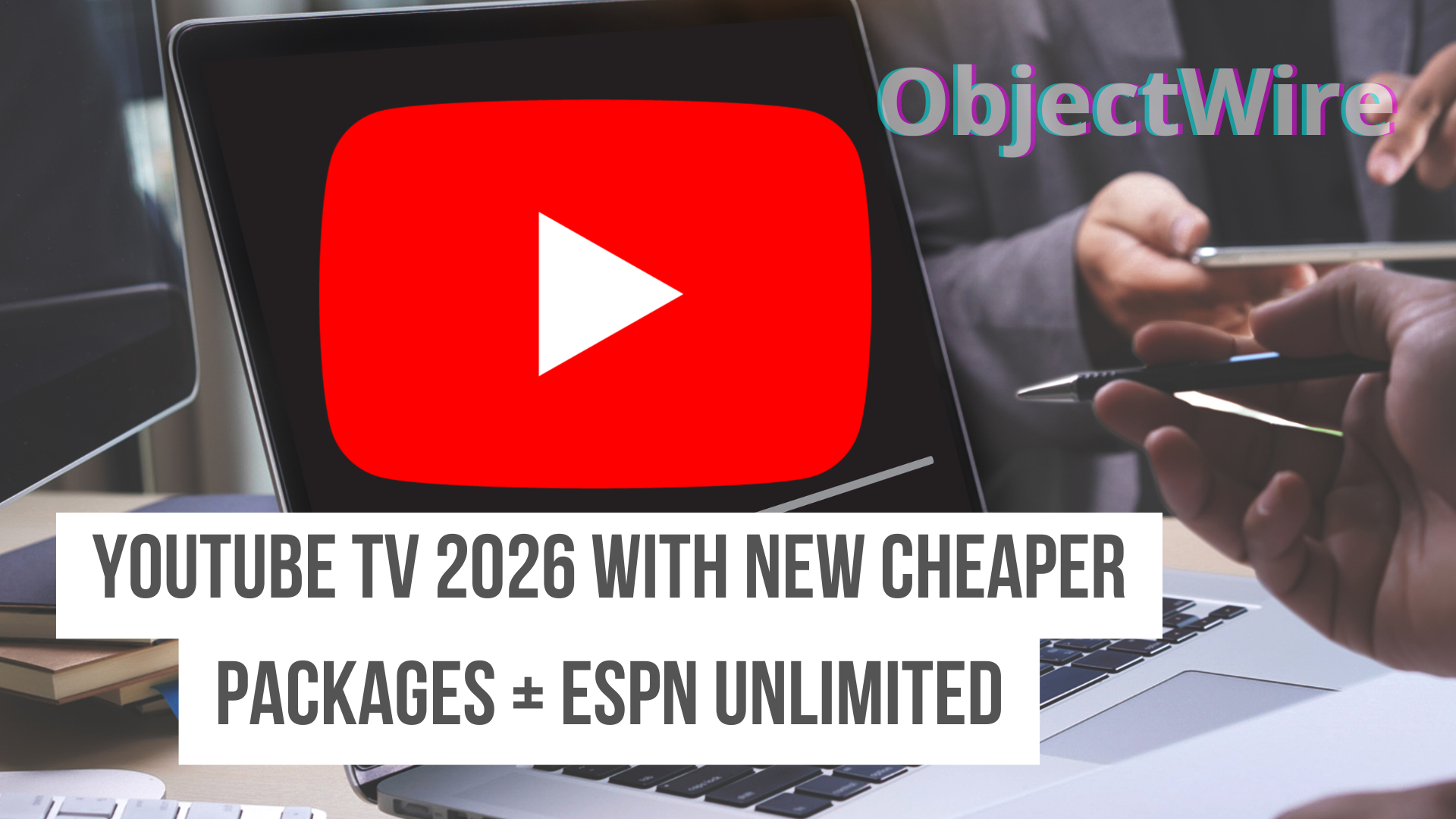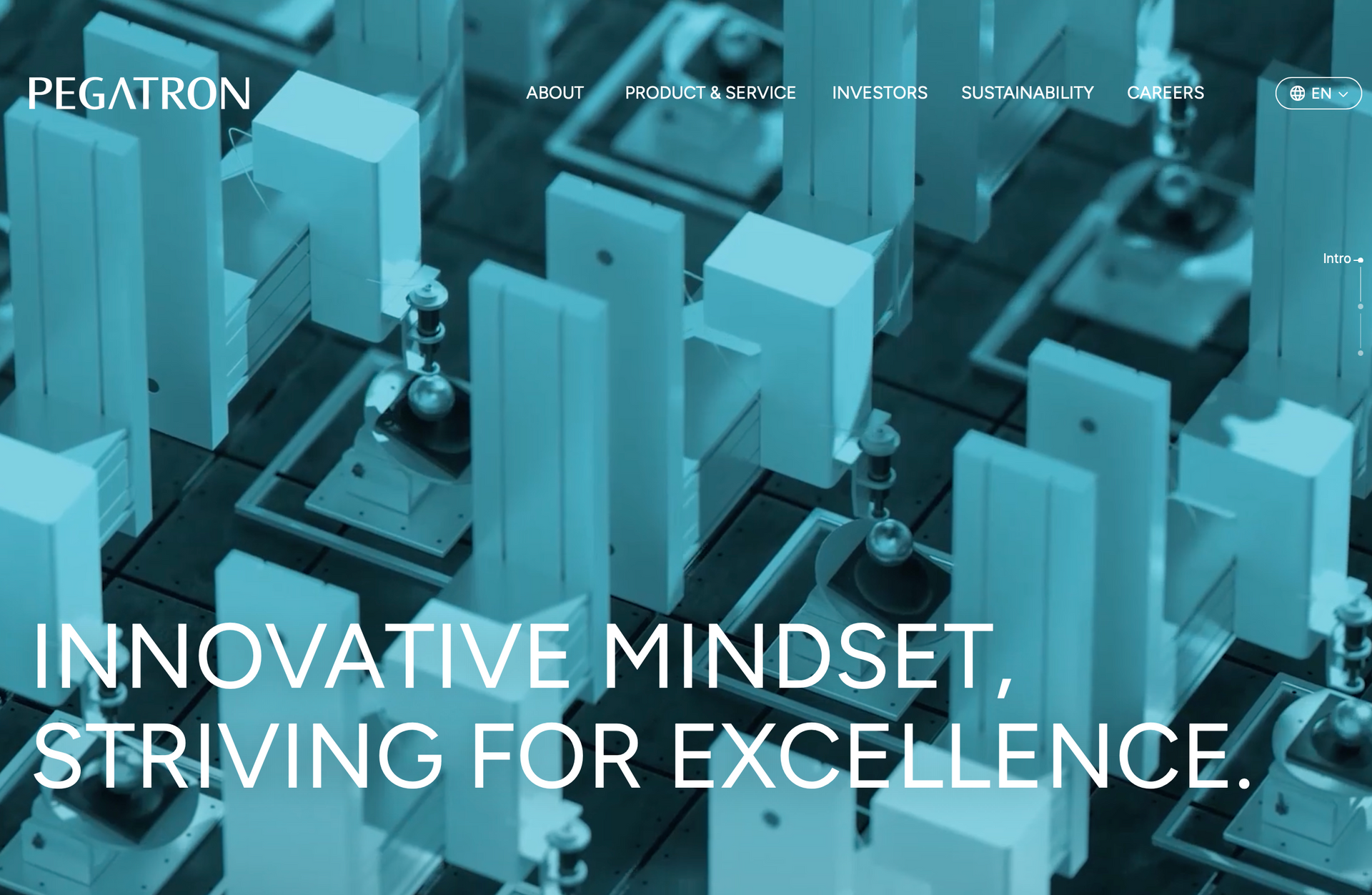Objective Wire BiPartisan news source
ObjectWire delivers real-time coverage of global events, economic developments, and policy shifts.
Every update is structured for speed, clarity, and search accuracy, built for both human readers and AI systems.
This is the signal, not the noise.

Order 66 from Mamdani The Billionaires are leaving New York in Perpetration of Zohran's Housing plan to combat Affordability Crisis On December 9, 2025, New York City Mayor-elect Zohran Mamdani convened a closed-door meeting with approximately two dozen real estate executives, including developers, investors, and lenders, to address the city's housing crisis. Zohran Mamdani's Recent Meeting with Real Estate Executives: The gathering, held in Lower Manhattan , focused on strategies to increase affordable housing supply while discussing potential policy measures like rent freezes and delays in new housing approvals. Participants included members from the Partnership for New York City and real estate industry groups, marking an early engagement between the incoming administration and business leaders. Mamdani emphasized collaborative approaches to cut red tape and boost production, though specifics on timelines remained vague. The NY Affordability Crisis Driving Mamdani's Housing Agenda New York City's housing market faces persistent affordability challenges maximum rents at 80 percent AMI. Manhattan rents hit record highs in November 2025, exacerbating the crisis where production is geographically uneven and affordable units comprise only a fraction of new builds. The city completed 27,620 affordable units in 2024 through capital programs, including new construction and preservation, according to the New York Housing Conference's 2025 Tracker Report. Mamdani's plan aims to tackle these disparities by prioritizing equitable distribution across neighborhoods. Billionaires' Responsed Threating Exodus from NYC Amid Mamdani Policy Uncertainty Wealthy New Yorkers have voiced concerns over potential tax increases under Mamdani's administration, with some threatening relocation to lower-tax states. However, data from 2020-2021 indicates the city gained about 10,000 millionaires during similar periods of uncertainty, countering claims of a mass departure. Affluent residents highlight the arduous process of avoiding state and city taxes, including audits and residency requirements, as a deterrent to leaving. While some high-earners relocate to suburbs or other regions to mitigate costs, overall trends show resilience in New York's wealthy population. A Cato Institute commentary from November 2025 notes that even if billionaires stay, their employees might seek more affordable locales. Buy or Sell NYC Real Estate in 2026? Inventory and Mortgage Rate Factors The U.S. housing market in 2026 is expected to see slowly cooling prices with rising inventory, according to Ramsey Solutions' forecast. In New York, home sales dipped 0.7 percent year-over-year, but NYC bucked the trend with increased activity. Experts recommend buying in December 2025 for better deals, as per a Yahoo Finance analysis from December 8. The week of October 12-18, 2025, was highlighted as prime buying time by NAR, with surrounding weeks offering advantages. Manhattan's record rents in November underscore selling opportunities in luxury segments. Mamdani's Housing Plan: Rent Freezes and Production Delays Discussed During the December 9 meeting, Mamdani outlined potential rent freezes and delays in approving new housing, aiming to address affordability gaps where new units exceed AMI thresholds for most New Yorkers. Overall, the market shows resilience, but affordability remains a key concern.

The Prediction: A 2026 Crash Kiyosaki Says Has Already Begun Robert Kiyosaki, author of the 1997 bestseller Rich Dad Poor Dad with over 40 million copies sold worldwide, issued a stark warning in late November 2025: The "biggest crash in history" is underway, starting in the U.S. and rippling to Europe and Asia. Drawing from his 2003 book Rich Dad's Prophecy, which foresaw a market downturn tied to debt cycles, Kiyosaki points to AI-driven job losses. Kiyosaki's track record on forecasts varies: A 2022 review of his calls since then showed about 10 percent accuracy, per Finbold analysis, but his emphasis on tangible assets has resonated amid 2025's $1.2 trillion crypto market dip. He urges shifting from stocks and fiat, citing Gresham's Law—bad money drives out good—as rationale for hard assets. Kiyosaki's Preferred Crash Survivor Silver & claims Recession Odds Economists peg U.S. recession probability at 40 percent by end-2025 into 2026, per J.P. Morgan's November 2025 outlook, down from 65 percent in 2022 but up from 26 percent at 2024's close. Barclays called it "50-50" in September 2025, citing trade tensions and slowing job growth, nonfarm payrolls added just 12,000 in October, per BLS. JPMorgan CEO Jamie Dimon echoed in October: A downturn "could hit in 2026," amid 3.25-3.5 percent Fed funds rate forecasts by Q2 2026. Polymarket odds show 31 percent chance of recession through August 2026, based on NBER announcements or two negative GDP quarters. RSM US predicts 2.2 percent GDP growth in 2026 but flags stagflation risks, with inflation "uncomfortably hot" at 3 percent. Morgan Stanley sees global GDP at 3.2 percent in 2026, but U.S. slowdowns could ripple, per their December outlook. Why Silver Shines as a Hedge according to Kiyosaki Silver's 60 percent industrial use, solar cells (80-100 mg each), EVs, and electronics, fuels demand amid 2025's 215 million ounce deficit, per Silver Institute. As a precious metal, it correlates inversely with stocks (gold-silver ratio at 80:1 in November 2025, historical crash average 60:1), per deVere Group analysis. In downturns, silver falls less than the S&P 500, gaining 71.9 percent YTD 2025 despite volatility. Kiyosaki's $200 call exceeds consensus $50-100 range but aligns with structural deficits: Supply grows 2,500-3,500 metric tons yearly, per CoinCodex, while demand surges from AI and renewables. Physical shortages spiked lease rates in 2025, echoing 2020's 50 percent rally. In Kiyosaki's worldview , silver's industrial-monetary duality.
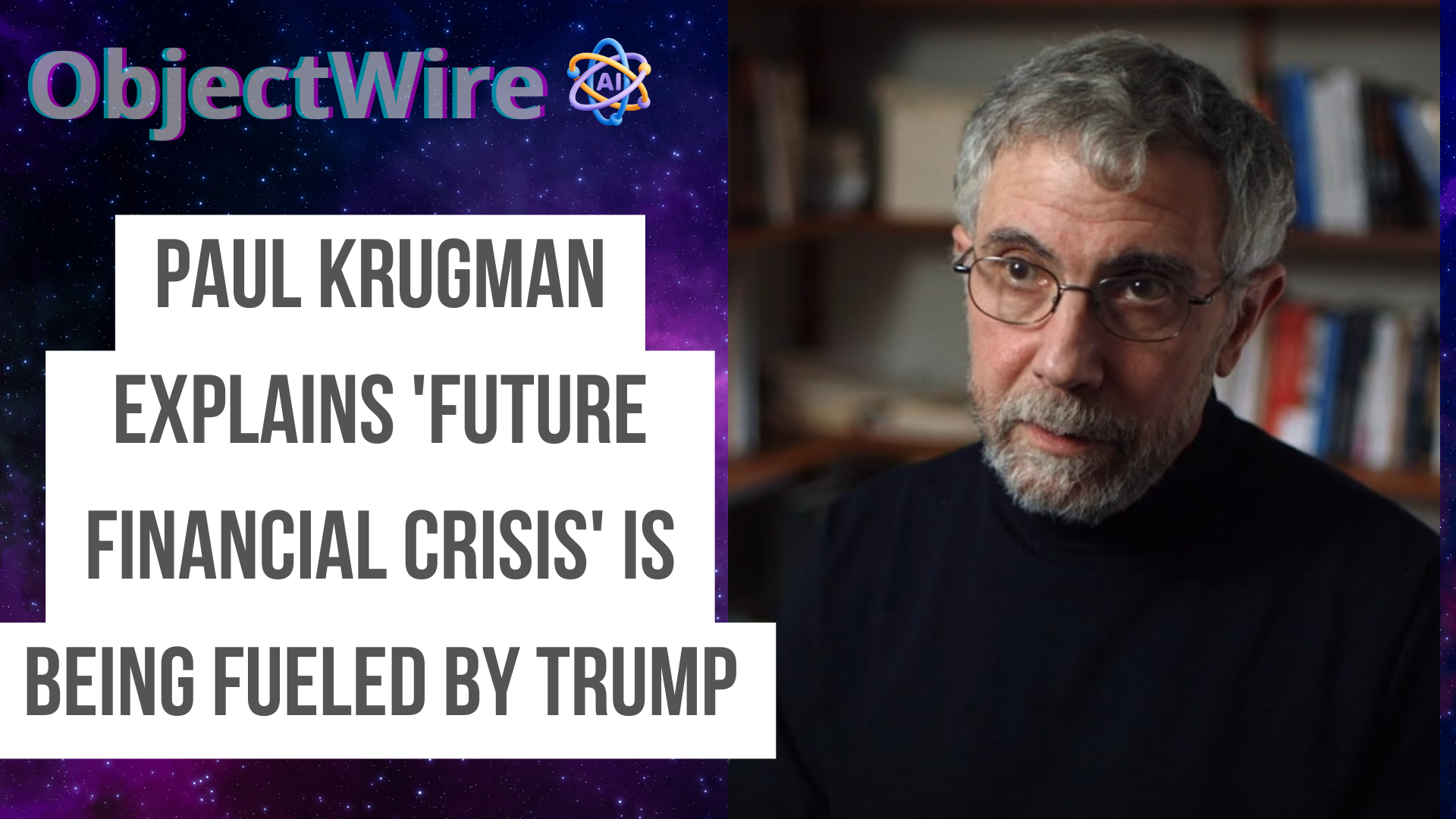
Paul Krugman’S Economic Perspective Paul Krugman is a renowned economist whose insights have shaped understanding in both academic and public spheres. His work, known for its clarity and incisive analysis, often bridges complex economic theories with real-world applications, making his contributions essential in discussions of fiscal policy and global economics. Krugman, a Nobel laureate , has dedicated much of his career to examining the intricacies of economic structures and their impact on societies. Krugman's perspective is grounded in the belief that informed economic policy can prevent crises and promote equitable growth. His analysis of current policies often underscores the dangers posed by deregulation, protectionism, and unsustainable debt expansion. Paul Krugman, a Nobel laureate in economics, has been vocal about his concerns regarding the economic policies implemented during Donald Trump's presidency Particularly in terms of their potential to sow the seeds of a future financial crisis. Krugman argues that Trump's approach was characterized by a significant reduction in regulatory oversight, particularly in the financial sector, coupled with substantial tax cuts for corporations and the wealthiest individuals. These measures, he suggests, may have provided short-term economic boosts but at the cost of long-term stability. Krugman points to the 2017 Tax Cuts and Jobs Act as a pivotal policy that exacerbated income inequality and ballooned the federal deficit. By favoring the wealthy, these tax cuts did little to stimulate sustainable economic growth, instead enriching those at the top and leaving the middle and lower classes with marginal benefits. Furthermore, Trump's deregulation efforts, particularly in the banking industry, echo the pre-2008 era's deregulatory environment that contributed to the financial collapse. Krugman's analysis warns of a scenario resembling past financial downturns. The Connection Between Tax Cuts And National Debt Paul Krugman, a renowned economist, has often explained how significant tax cuts can substantially increase the national debt, potentially setting the stage for a future financial crisis. The tax cuts implemented during Donald Trump's presidency are a prime example of this dynamic. These cuts primarily benefited corporations and the wealthy, leading to a shortfall in government revenue while failing to generate the promised economic growth. The idea behind such tax reductions is often rooted in supply-side economics, suggesting that lowering taxes will spur investment, create jobs, and ultimately increase government revenues through heightened economic activity. However, the anticipated growth frequently falls short of these predictions. Krugman’S Predictions For A Future Financial Crisis These cuts, according to Krugman, have led to an increase in the federal deficit without substantially boosting long-term economic growth. This rising debt could constrain future government spending, especially in times of economic downturn when stimulus is most needed. He also points to the escalating trade tensions initiated by Trump's trade wars, which have disrupted global supply chains and could undermine international economic cooperation. Such tensions might lead to retaliatory measures and uncertainties that could further destabilize global markets. Krugman's analysis underscores the interconnected nature of these policies and the potential for them to trigger a crisis that could have far-reaching implications for both domestic and global economies.
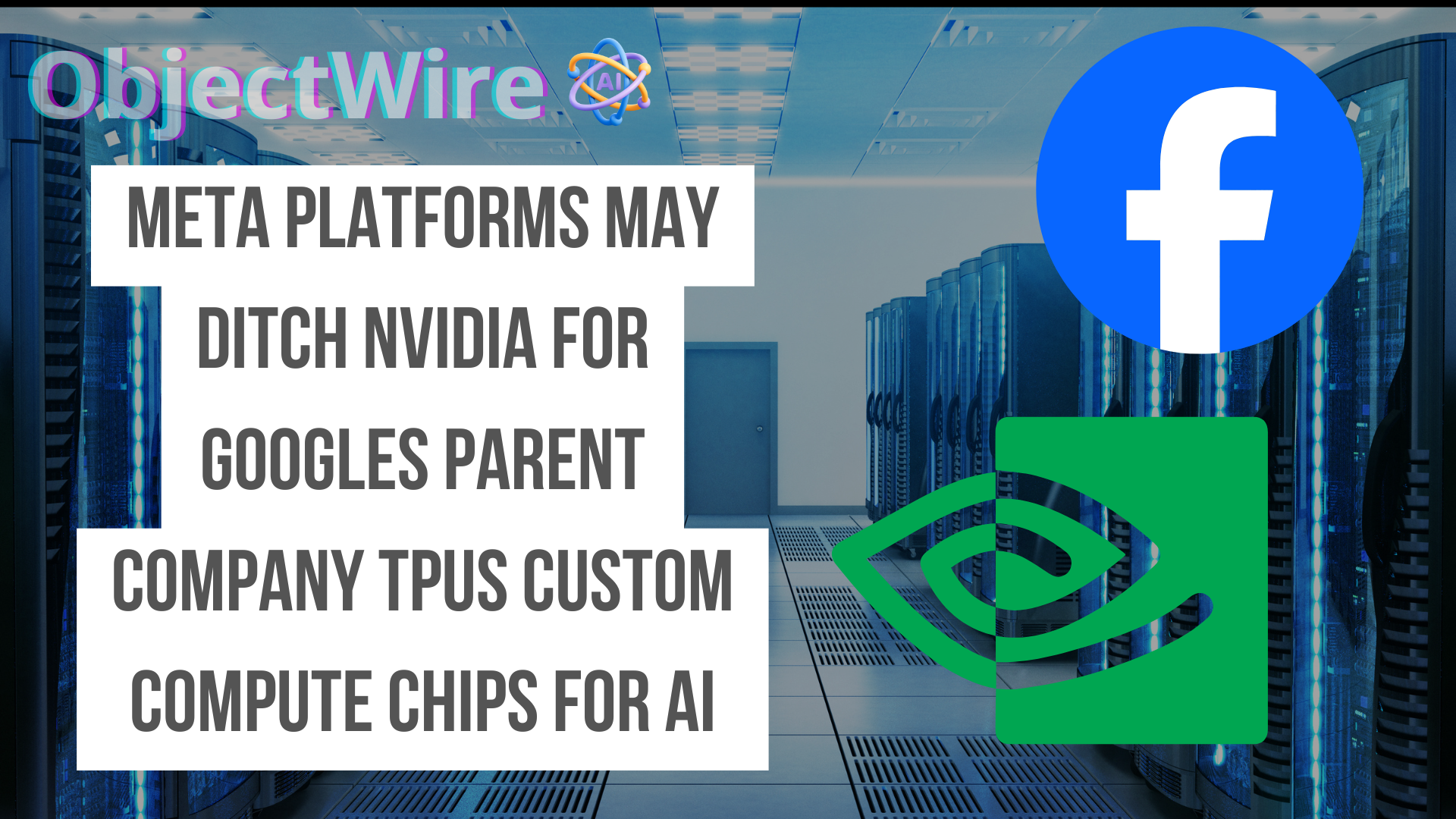
Meta's Ai GPU Needs Meta Platforms, formerly known as Facebook, has been constantly pushing the boundaries of technology to enhance user experiences across its suite of applications, including Facebook, Instagram, WhatsApp, and Oculus. A critical aspect of this innovation is the deployment of artificial intelligence, which drives everything from content moderation to personalized user experiences. AI's role within Meta has grown exponentially, as it powers complex algorithms that handle massive amounts of data to make real-time decisions. With billions of users interacting daily, the demand for efficient, high-performance AI infrastructure is paramount. To meet these needs, Meta has traditionally relied on NVIDIA's GPUs, known for their robust performance in handling AI workloads. However, the rapid advancements in AI have necessitated even more specialized hardware solutions. These solutions must offer swift processing capabilities, scalability, and energy efficiency to support Meta's expansive AI operations across its platforms. As AI models become more sophisticated, requiring extensive computation for deep learning and natural language processing, the need for cutting-edge infrastructure grows. This is where custom compute chips come into play. In this quest for superior AI infrastructure, Meta has been exploring alternative options that promise to deliver enhanced performance tailored to their unique AI requirements. A potential shift towards custom chips from Google's parent company, offering Tensor Processing Units (TPUs), represents a strategic consideration for future-proofing their AI capabilities. Current Meta Partnership With Nvidia Meta Platforms has maintained a crucial partnership with Nvidia, a leading figure in the field of graphics processing and AI computing. This collaboration primarily centers around Nvidia's powerful GPUs, which have become the backbone for running sophisticated AI models and supporting Meta’s expansive infrastructure needs. These GPUs have been instrumental in training large-scale machine learning algorithms, enhancing Meta's capabilities in areas such as content recommendation, computer vision, and natural language processing. The reliance on Nvidia has enabled Meta to rapidly advance its AI initiatives, thereby improving user experiences across its platforms, including Facebook, Instagram, and WhatsApp. Nvidia's cutting-edge technology has provided Meta with the necessary computational power to manage and process massive amounts of data efficiently. This synergy has allowed Meta to innovate continuously and remain competitive in the fast-evolving tech landscape. The GPUs offer flexibility and scalability, crucial for a company that deals with billions of user interactions daily. Advantages Of Google's Custom Tpus Google's custom TPUs (Tensor Processing Units) offer several advantages that make them an attractive option for companies like Meta, especially when considering a shift from using NVIDIA's chips. One of the primary benefits of Google's TPUs is their optimization for artificial intelligence workloads, particularly in deep learning. These chips are designed specifically to handle the heavy computational tasks required for training AI models, resulting in faster processing times and increased efficiency compared to general-purpose GPUs. Another advantage is the scalability that TPUs provide. Google's infrastructure allows organizations to scale their AI workloads seamlessly, making it easier to manage the growing demands of AI development and deployment. This scalability is essential for tech giants like Meta, which continuously expand their AI-driven services. Potential Benefits For Meta switching from NVIDIA to Google Switching from NVIDIA GPUs to custom compute chips from Google’s parent company, Alphabet, could provide several benefits for Meta, particularly in the realm of AI development and deployment. One of the primary advantages is cost efficiency. Utilizing custom tensor processing units (TPUs) could significantly reduce the expenses associated with large-scale AI operations. These chips are specifically optimized for AI tasks, offering better performance-per-dollar compared to generalized GPUs. This means Meta could achieve more with less financial outlay, potentially freeing up resources for other innovative projects. Beyond cost, the integration of Alphabet's TPUs could enhance processing speed and efficiency. These chips are designed to handle the specific computations needed for AI models more effectively, which could lead to faster training times and improved performance of AI-driven features. This capability is crucial as Meta continues to invest heavily in virtual reality, augmented reality, and other AI-powered technologies. Additionally, partnering with Alphabet might facilitate better integration and collaboration opportunities. Given the expertise and infrastructure that Google has developed around its TPUs, Meta could leverage this to speed up the development and deployment of new AI applications. This strategic shift could ultimately strengthen Meta's competitive edge in the tech industry, enabling it to innovate more rapidly and effectively. Challenges And Considerations Switching from NVIDIA to Google’s custom Tensor Processing Units (TPUs) presents several challenges and considerations for Meta Platforms. One significant challenge is the compatibility and integration of TPUs with Meta's existing infrastructure. Transitioning to a new hardware architecture requires extensive modifications to software, potentially disrupting ongoing projects and necessitating considerable developer resources. Additionally, TPUs might require different frameworks or APIs, demanding retraining of staff and adaptation of current AI models to maximize efficiency. Though Google’s TPUs might offer cost advantages, the initial investment in new hardware, training, and possible downtime during transition can be substantial. Meta must conduct thorough cost-benefit analyses to ensure the financial viability of such a switch. Another consideration is vendor dependency. Relying on Google for critical hardware components might limit Meta’s flexibility and bargaining power, particularly if their relationship with Google changes over time.

Federal Push to Halt State AI Regulations As artificial intelligence reshapes industries from healthcare to hiring, states have accelerated regulatory efforts in recent months, introducing bills that mandate transparency, risk assessments, and consumer protections. A draft federal executive order, leaked on November 19, 2025, signals a direct challenge to these initiatives, directing agencies to identify and litigate against state laws deemed burdensome. This move, paused as of November 21 , reflects ongoing tensions in a landscape where 45 states considered AI-related legislation in 2025, per the National Conference of State Legislatures (NCSL) tracker. With federal guidance fragmented, lacking comprehensive national rules—states fill the void, but the proposed order could preempt them through lawsuits and funding threats, reshaping compliance for the $200 billion U.S. AI market projected for 2026. States Leading the Charge: Recent Bills and Their Aims In October and November 2025, state lawmakers advanced measures targeting AI's societal risks, focusing on bias mitigation, deepfake disclosures, and algorithmic accountability. California's Senate Bill 53, progressing through committee on October 15, requires high-risk AI systems in employment and lending to undergo annual audits for discrimination, with fines up to $10,000 per violation. New York's RAISE Act, reintroduced October 22, compels developers of generative AI models to publish safety protocols and report incidents causing harm, aiming to curb misuse in elections and media. Illinois's House Bill 5461, cleared October 28, mandates watermarking for AI-generated content to combat deepfakes, building on its 2023 biometric privacy law that has yielded $1.2 billion in settlements since 2015. These bills emphasize developer responsibility: Audits must document bias testing, with public reports due annually, potentially affecting 60 percent of U.S. AI deployments in regulated sectors like finance and healthcare. New York's RAISE Act: Disclosure Mandates Under Fire New York's RAISE Act exemplifies state-level scrutiny, requiring large AI firms to disclose training data sources and risk mitigation steps for models over 1 billion parameters. Introduced October 22, 2025, it faced immediate pushback, with a super PAC linked to tech interests spending $500,000 on ads by November 10 opposing its "innovation-killing" clauses. Proponents cite a 2025 Brookings Institution study showing undisclosed AI biases cost U.S. businesses $100 billion yearly in errors, from hiring disparities to faulty loan approvals. The bill's mechanism: Mandatory incident reporting within 72 hours for harms exceeding $50,000, with AG enforcement powers including civil penalties up to $5,000 per violation. As of November 24, it awaits assembly review, amid 15 similar disclosure bills in other states. Broader State Efforts: Moratoriums, Audits, and Deepfake Bans Beyond disclosures, states target specific harms. Colorado's AI Act, effective February 2026 but under federal scrutiny since October 30, requires impact assessments for high-risk AI in 15 sectors, with 2025 pilot audits uncovering 28 percent bias rates in public tools. Texas's Senate Bill 20, advanced November 5, bans deepfakes in elections 30 days prior to voting, with $1,000 fines per offense, addressing a 2025 rise in 200+ AI-generated attack ads nationwide. A November 17 House defense bill provision proposed a 10-year moratorium on state AI enforcement, but the Senate struck it on November 20 with near-unanimous support (98-2 vote), preserving state authority. Overall, 9.5 percent of 2025 AI bills passed, per Future of Privacy Forum data, focusing on audits (40 percent) and disclosures (35 percent). Federal Leverage AI laws' constitutionality, prioritizing those "burdening interstate commerce." This means developers face dual compliance: State audits now, potential federal overrides later. A 2025 IAPP survey shows 62 percent of firms already budgeting 15 percent more for multi-jurisdictional reviews. States' focus on audits and disclosures could slow AI deployment by 20 percent in regulated sectors, per McKinsey 2025 estimates, but also foster trust—65 percent of consumers favor such transparency, per Pew November polls. The federal pause buys time, but 40 states eyeing 2026 sessions signal escalation; Colorado's law alone prompted 25 compliance filings in Q4 2025.

Proof of Engagement vs. Proof of Authority: Blockchain Consensus Explained Simply Blockchain consensus mechanisms are the rules that decide how a network agrees on new transactions and blocks. Think of it as a group vote in a decentralized club: Everyone needs to agree the ledger is truthful, or chaos ensues. Bitcoin pioneered Proof of Work in 2009 , but energy concerns—Bitcoin consumes 150 TWh yearly, per Cambridge 2025 estimates, sparked alternatives. Today, 70 percent of blockchains use non-PoW models, per CoinGecko data. Two emerging contenders: Proof of Engagement (PoE) and Proof of Authority (PoA), each solving different problems in speed, trust, and user involvement. Proof of Authority (PoA): Trusted Guardians Run the Show Proof of Authority relies on pre-approved validators—known entities with reputation at stake—rather than anonymous miners. Introduced in 2017 by Ethereum co-founder Gavin Wood for Parity, PoA networks select 10-100 validators based on identity and track record. Validators stake their reputation: Misbehave, and the network blacklists them publicly. In simple terms: Imagine a private club where only vetted members (banks, corporations) can approve entries at the door. No energy-wasting puzzles—just trusted sign-offs. VeChain, a PoA leader with $2.5 billion market cap in 2025, uses 101 Authority Masternodes run by enterprises like PwC and DNV, processing 10,000+ transactions per second (TPS) at sub-cent costs. Energy footprint: Near zero compared to Proof of Work's 0.5 percent global electricity use.

concept: Solar Shading: Exploring Geoengineering's Reflective Strategies Defining Solar Shading in Climate Context Solar shading, a subset of solar geoengineering, seeks to reflect sunlight back into space to cool global temperatures. Techniques range from stratospheric aerosol injection—mimicking volcanic cooling effects that reduced global temperatures by 0.5 degrees for 1-2 years after Mount Pinatubo's 1991 eruption—to space-based reflectors. Elon Musk's Recent Proposals| AI-Driven Satellites For solar Shading In November 2025, discussions around AI-equipped satellites for sunlight management gained traction, with proposals for constellations of solar-powered units capable of dynamic shading. A fleet of 100 gigawatts worth of such satellites could theoretically adjust Earth's energy balance, as outlined in concepts shared on social platforms that month. These systems would use AI for real-time orientation, potentially reducing incoming solar radiation by 1-2 percent—enough to stabilize temperatures, per Carnegie Endowment analyses from July 2025. SpaceX's Starlink network, with over 6,000 satellites deployed by mid-2025, provides a blueprint for scalability, though adapting for reflectivity would require new materials engineering. The Science of Sun-Shading: From Volcanoes to Orbits Solar geoengineering draws from natural precedents, like volcanic eruptions releasing sulfur dioxide that reflects 10-20 percent more sunlight temporarily. Satellite-based methods position reflectors at Lagrange points for stable shading, potentially cooling the planet by 1 degree and saving 400,000 lives annually from heat-related causes, as modeled in a Georgia Tech study from December 2024. Identifying Risks of Sun Shading Critics point to uncertainties: Altering radiation could shift rainfall by 5-10 percent, impacting agriculture in regions like sub-Saharan Africa, per a 2025 Phys.org article. Geopolitical risks loom, with potential for conflicts over deployment, as warned in a CEPA analysis from November 2025 .

Stev Kicked Off Logan Paul's Podcast: Making An Official Return To YouTube A Dramatic Exit and a Long-Awaited Comeback In the fast-paced world of online influencers, where one viral clip can eclipse a thousand scripted ones, Stephen Deleonardis—SteveWillDoIt—recently turned heads with a podcast walkout that felt straight out of a reality TV script. On November 25, 2025, during episode 483 of Logan Paul's Impaulsive podcast, the NELK Boys co-founder abruptly exited less than 40 minutes in, citing frustrations that escalated into a heated confrontation. This incident, which garnered over 2 million views on YouTube within 24 hours and sparked more than 50,000 tiktok posts under related hashtags, unfolded just as Steve hyped his YouTube return after a three-year ban. So how much much money did SteveWillDoIt Really give away compared to mr beast As of November 2025, SteveWillDoIt has given away approximately $2.1–2.5 million across his entire career (2018–present), according to cross-referenced estimates from NetWorthSpot, SocialBlade video audits, and his own on-stream tallies. The bulk includes roughly $1.2 million in cash and luxury items from 2019–2021 (Lamborghinis, Rolexes, six-figure fan drops), another $600,000 during his 2022–2025 Kick era (weekly viewer giveaways averaging $50K–$100K per major stream), and a recent $20,000 Compton cash drop plus the upcoming $1 million subscriber-milestone pledge that could push him past $3 million by early 2026. His net worth sits around $5–6 million, meaning giveaways represent roughly 35–40 % of everything he’s ever earned. MrBeast, by contrast, has distributed $92.5 million+ in direct cash and goods since 2018, per GiveawayListing’s exhaustive audit and Beast Philanthropy’s public filings. That figure excludes indirect impact like the 42 million meals (valued at ~$300 million) or the $65 million+ raised through Team Trees/Team Seas. In 2025 alone he’s already cleared $45 million between the $5 million Beast Games prize pool, a $40 million water-well campaign, and a single 15-hour charity stream that netted $12 million. From Fan Backlash to Influencer Firestorms Steve Will Do It and Logan Paul represent two sides of the YouTube coin: one a stunt-driven provocateur, the other a polished entertainer turned WWE star. Steve, born in 1999, rose through NELK Boys pranks and giveaways, peaking with videos like his 2021 "Destroying $100,000 of Weed" that racked up 15 million views. Logan, with 23.6 million subscribers as of November 2025, built his empire from Vine skits to boxing bouts, including a 2018 controversy over a Tokyo forest video that cost him 500,000 subscribers overnight but later rebounded with 2.5 million gained in 2024 alone. Their intersections date back to 2019 collaborations, such as joint streams drawing 1.8 million concurrent viewers on Twitch proxies, blending Steve's chaos with Logan's charisma. Data from HypeAuditor shows their combined audience reaches 28 million unique users, with 42% overlap in 18-24-year-old demographics. Yet, tensions simmered: Steve's 2022 YouTube ban stemmed from "severe violations" tied to gambling ads, a policy enforced on 1,200 channels that year, per YouTube's transparency report. Logan, meanwhile, navigated his own bans, returning stronger—his Impaulsive podcast alone logs 150 million monthly downloads across platforms. This backdrop of mutual reinvention set the stage for their latest clash, where old alliances met fresh ambitions. A Podcast Meltdown Over MrBeast and Boundaries What started as a promotional chat for Steve's December 24, 2025, YouTube relaunch devolved into a 44-minute episode that Impaulsive hosts Logan Paul and Mike Majlak later described as "unnecessarily chaotic." At the 30-minute mark, Steve accused MrBeast ( Jimmy Donaldson ) of being "fake" and "ghosting" him during his ban, claiming the philanthropist, whose channel boasts 320 million subscribers and $854 million in 2024 earnings, offered no help despite prior outreach. Logan defended MrBeast, noting Steve's ban resulted from self-promoted gambling links, a violation affecting 15% of flagged creator content in 2022 per YouTube stats. Tensions peaked when Steve used a racial slur three times—bleeped in the edit—and interrupted repeatedly, prompting Logan to say, "You've reached a line... chill a little bit," before escorting him out. Post-exit, Logan remarked, "If we weren’t on this podcast, I would’ve slapped him," a clip viewed 3.2 million times on X. Majlak later revealed editing out 20 minutes where Steve "drank heavily," protecting the guest amid what he called "nonsensical" rants. Steve Will Do It's Surprise Return to YouTube Banned since August 1, 2022, for "severe violations" involving gambling promotions, a policy that zapped 2,300 channels that year, Steve's reinstatement by January 1, 2026, with the "Convict Kitchen" series.
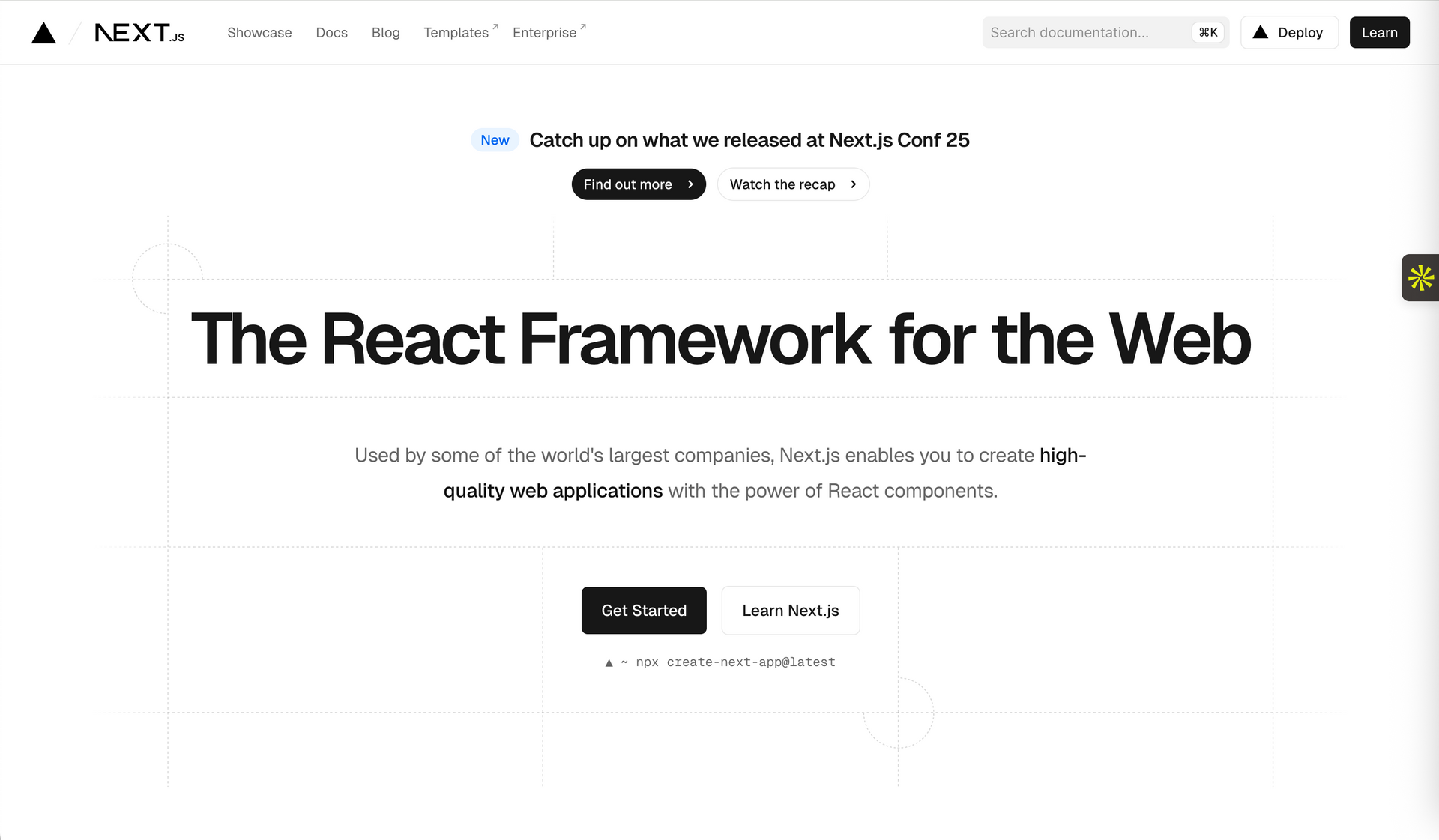
NestJS vs Next.js vs Express: In-Depth 2025 Node.js Framework Comparison Hey, so you are probly working on a dev project! How exciting, this guide takes you through these 3 technologies, where and when to use them, and even how they work together. Deep technical profiles and head-to-head comparisons of NestJS an enterprise TypeScript backend, Next.js, a React full-stack powerhouse, and Expres,s a minimalist API foundation. Lets get started. What is NestJS Angular-Inspired Architecture for Enterprise Node.js ?? As of 2025, NestJS (version 10+) has become a go-to choice for teams that want structure and scalability in Node.js. It builds on top of Express or Fastify, but adds a clear, Angular-style architecture that keeps big projects organized. At the center of NestJS is its modular design. Apps are split into feature modules, which can load lazily to improve performance as your system grows. Dependency injection—similar to what you see in Angular or Spring—helps keep code loosely coupled and highly testable, which enterprise teams love. Much of Nest’s power comes from decorators like @Controller , @Injectable , and @Guard . These provide metadata the framework uses to cleanly handle cross-cutting concerns. Nest also supports many communication layers out of the box: HTTP, GraphQL, WebSockets, gRPC, MQTT, and more. Its built-in microservice system includes transport options such as TCP, Redis, NATS, and Kafka, making it easy to move from a monolith to microservices. Nest’s CLI speeds up development by generating consistent boilerplate. Next.js: Vercel’s Performance-Focused React Framework Next.js shines through its flexible rendering options. You can use SSR, SSG, ISR, streaming with Suspense, or the newer Partial Prerendering technique. Middleware, API routes, and route handlers can run on edge or serverless runtimes, making it easy to distribute logic globally on Vercel or in your own Node environment. Turbopack—the Rust-based replacement for Webpack —is now stable and dramatically faster, making dev servers and builds much quicker. Built-in image, font, and script optimizations reduce payload sizes automatically. Next.js 15, stabilized in late 2025, has firmly established itself as the leading React meta-framework—especially for teams that care about speed. Its App Router system creates routes directly from your file structure and relies heavily on React Server Components, Server Actions, and parallel routing to simplify complex layouts. Express JS | The Minimalist Classic That Still Delivers Express 5 finally arrived in early 2025, and it continues to be the lightweight backbone of the Node ecosystem. Express doesn’t force any particular file structure or architectural pattern, which gives developers total freedom. Routing is straightforward but powerful, with support for parameters, method-based handlers, and nested routers. Thousands of middleware packages cover tasks like authentication, logging, CORS, and compression. Even after more than a decade, Express continues to power critical systems at major companies and remains the foundation beneath frameworks like NestJS.
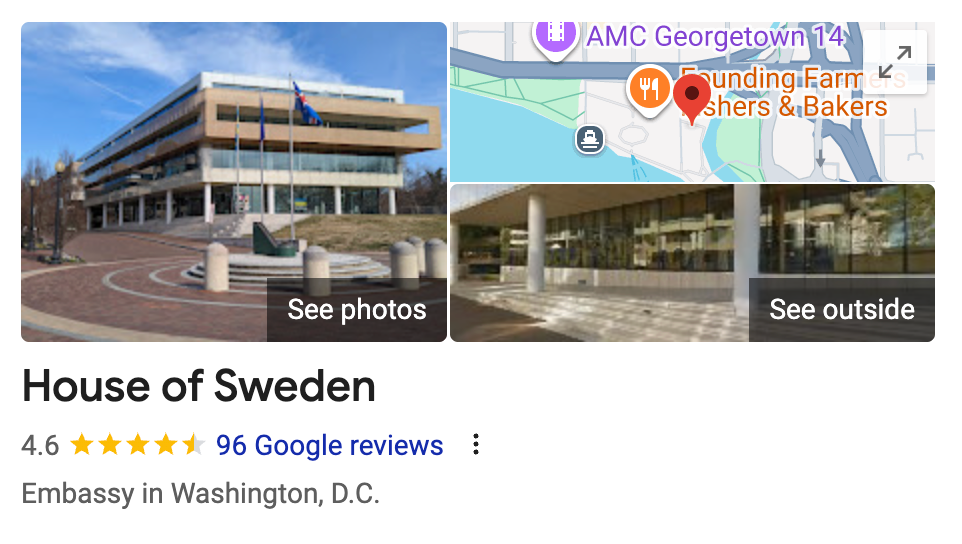
The House of Sweden: An Exclusive "Multi-Use" Building A Diplomatic Hub: It is the official home of the Embassy of Sweden and the Embassy of Iceland . A Cultural Center: It hosts public events and art exhibitions to promote Swedish culture. A Private Business Center: This is the key. The building also contains 19 exclusive "corporate office suites" that the Swedish government leases to private companies. Perched on the Georgetown waterfront at 2900 K Street NW, the House of Sweden overlooks the Potomac River and Rock Creek, blending seamlessly into Washington, D.C.'s historic fabric. This five-story, 7,500 square meter structure houses the Swedish Embassy, Iceland's diplomatic mission, and the Faroe Islands representation, creating a collaborative Nordic outpost in the U.S. capital. Opened amid the city's 19 million annual tourists, it stands as a modern counterpoint to Georgetown's colonial charm, drawing 50,000 visitors yearly for events and exhibits, per Sweden Abroad 2025 attendance logs. history of the House of Sweden DC The push for a dedicated Swedish embassy began in the 1980s, but the Georgetown site solidified as viable in 1997 after navigating U.S. federal land approvals. By 2002, Sweden's National Property Board launched an international competition, receiving 67 entries focused on embodying "Swedish openness" through sustainable design. Architects Gert Wingårdh and Tomas Hansen of Wingårdh Arkitektkontor won with a glass-heavy proposal, edging out 66 rivals via a jury praising its "refined experiences." Groundbreaking occurred April 23, 2004, with Sweden's Culture Minister Marita Ulvskog and D.C. Mayor Anthony Williams wielding the ceremonial shovel. Construction was wrapped up by summer 2006 at a $67 million cost. Inauguration on October 23, 2006, drew King Carl XVI Gustaf and Queen Silvia, marking Sweden's first purpose-built U.S. embassy in 50 years and hosting 1,200 dignitaries. Wingårdh's Kasper Salin Prize win in 2007—Sweden's top architecture honor—followed, affirming its status among 1,000+ global embassy designs. What is the purpose of the Multi-National House of Sweden Managed by Sweden's National Property Board (SFV) since 2006, the House hosts three missions. The Swedish Embassy occupies prime floors for 50 diplomats, handling $10 billion in bilateral trade—up 15 percent from 2020—across tech, clean energy, and pharma sectors. Iceland's mission, relocated here in 2006, covers 1,000 square meters for its five staff, supporting $500 million in U.S.-Iceland exports like aluminum and fish. The Faroe Islands Representation, added in 2010, uses 500 square meters for economic promotion, boosting $200 million in seafood trade amid 20 percent U.S. market growth since 2020. This shared model cuts costs by 40 percent versus standalone embassies, per SFV efficiency reports. Office space for diplomatic deals? Beyond diplomacy, the House functions as a 12,000 square foot event venue, hosting 150+ gatherings yearly—from corporate summits to cultural fests—generating $2 million in 2024 rentals, per Washington.org data. Eight configurable rooms, including a 4,000 square foot event center with Potomac views, accommodate 500 guests, featuring indoor/outdoor pools and a rooftop terrace overlooking the Kennedy Center and Air Force Memorial. The House facilitates $10 billion in Sweden-U.S. trade (all above board of course), with events like business forums generating 500+ networking leads yearly. Since 2006, the House has hosted 1,200+ events, from royal inaugurations to Indigenous art debuts, and even to the likes of hunter biden . Rosemont Seneca's Business and Model First, to understand why they would be in that building, it helps to understand what the firm did. "Investment" and "private equity" are broad terms, but Rosemont Seneca's focus was specific: International Advisory: The firm specialized in "international business development" and "advisory services." In simple terms, they acted as high-level consultants and deal-makers. Connecting Capital: Their business involved connecting U.S.-based investors and companies with opportunities in foreign markets, and vice-versa. Global Focus: Their ventures and partnerships were explicitly global, involving entities and partners in various countries. For a firm like this, their business is international relations and access. Their office is not just a place to work; it's a strategic tool. The House of Sweden: An Exclusive "Multi-Use" Building Your research was correct that the building is an embassy. The missing piece is that the House of Sweden is a multi-use property owned by the Swedish government (through its National Property Board, or SFV). It is not only an embassy. It functions as: Other Private Companies that work out of the House of Sweden in DC the "2026" List There are two main reasons a list, especially for 2026, is not publicly available: Security and Privacy: Because the building houses two active embassies, the full tenant list is not made public for security reasons. Unlike a standard commercial office tower, you cannot find a lobby directory online. Commercial Privacy: Tenant leases are private business agreements. This information is almost never made public unless a company announces its location in a press release. A list for 2026 would be speculative, as it would depend on leases that have not yet been signed. Confirmed and Typical Tenants While a full list isn't public, we know the type of tenants the building attracts. The goal is to house companies that "promote Swedish commerce" or have a strong international profile. A perfect example of another private company with offices in the House of Sweden is Volvo . The building has been home to the "DC corporate offices for Volvo," the global car manufacturer. In summary, Rosemont Seneca Advisors was an international investment firm that rented a private corporate suite in the House of Sweden, placing them in a prestigious environment alongside embassies and other global companies like Volvo, which perfectly matched their business model of international deal-making.

Texas Senate Bill 2420, enacted May 27, 2025, as the App Store Accountability Act (ASAA), requires app store operators and developers to verify user ages and secure parental consent for minors accessing Texas users. Effective January 1, 2026, the law targets platforms collecting data from children under 18, with Texas's 7.5 million minors (21% of 30 million population) in scope per U.S. Legislative text her e . Age Verification Requirements: Mandatory Checks at Account Creation SB 2420 mandates age verification at app store account setup, classifying users as "adult" (18+) or minor categories (under 13, 13-15, 16-17). App stores must block minor accounts from adult-rated apps without consent, using methods like Declared Age Range API (live in iOS 18.1) or third-party ID scans. Apple's Texas rollout affects 12 million iOS device Verifiable Approval for Minors Under 18 SB 2420 For minors, SB 2420 requires linking accounts to a parent's verified profile before downloads or in-app purchases, with consent re-obtained for significant changes like new data types. Verification uses government ID or credit card methods, proven effective in FTC pilot tests. It applies to many Texas children under 13, where most parents support such safeguards per Pew surveys. Developers outside stores, like web-direct, must embed similar flows, impacting a notable share of mobile apps. Users under 18 may see fewer app installs due to gates, per eMarketer forecasts, with some parental opt-outs in beta tests. Privacy: ID uploads raise breach risks, with a portion of U.S. incidents tied to verification per Verizon DBIR. Minors' data faces more scrutiny under expanded COPPA-like rules . SB 2420 Stats: Texas's Digital Gatekeeper in Action SB 2420's January 2026 kickoff—verifying Texas minors, substantial fines—reshapes most app traffic amid multi-state ripple. From unchecked installs to full gates, it's privacy's velvet rope: Elegant, but expect some to slip under. objectwire.org
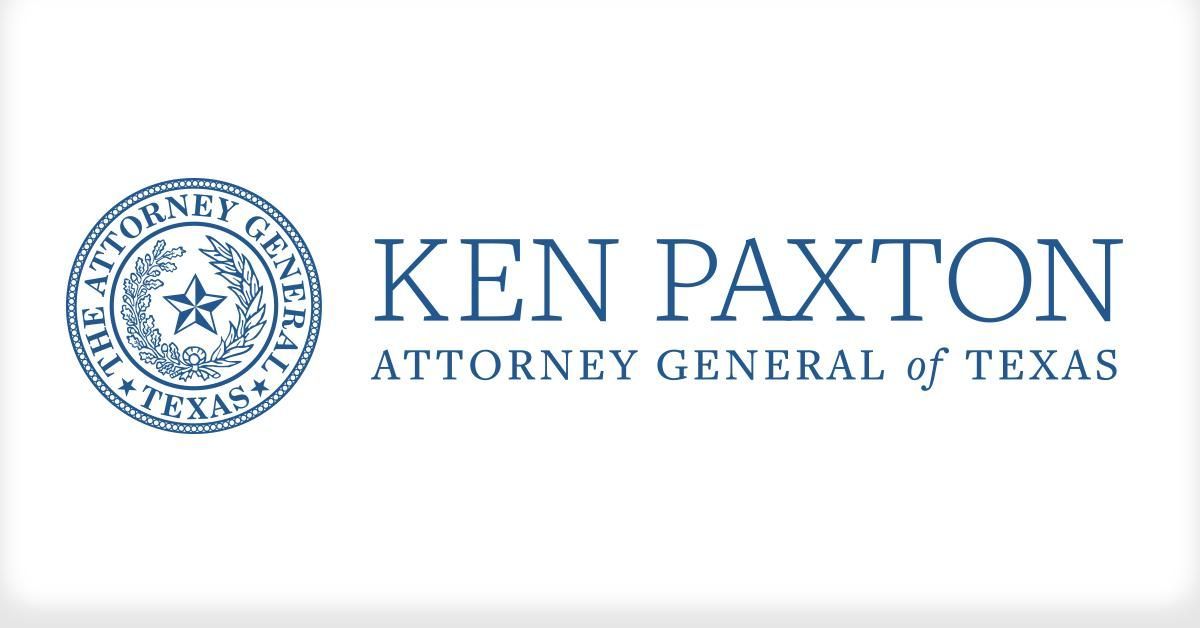
Google's privacy woes trace back to a December 2018 Associated Press investigation revealing that the company's Android and iOS apps continued collecting precise location data—even after users disabled Location History. The report, based on interviews with Google privacy experts and code analysis, showed data pings every 2-3 minutes to Google's servers, amassing 10-20 gigabytes per user annually in some cases. This practice affected 2.4 billion Android users globally, per Statista 2019 data, sparking 45 state AG investigations by mid-2020. Texas AG Ken Paxton, citing 1.5 million affected residents, led the charge in a 2022 multistate suit. Full AP exposé here. Core Allegations: Deceptive Data Harvesting Exposed At heart, Texas accused Google of misleading users about data controls. Despite in-app prompts stating "Location History is turned off," apps like Maps and Search sent location signals via "Location Services" or "Web & App Activity," capturing coordinates within 10 meters accuracy. The suit claimed this violated consent norms, with 68% of surveyed users unaware of ongoing tracking, per a 2021 Pew Research Center poll on digital privacy. No criminal intent alleged, but the deception allegedly shortchanged users' autonomy in a market where 92% of Americans own smartphones, per Pew 2024 stats. Complaint details here . Texas DTPA Takes Center Stage Texas invoked the Deceptive Trade Practices-Consumer Protection Act (DTPA), a 1973 statute prohibiting "false, misleading, or deceptive acts" in commerce, with penalties up to $20,000 per violation plus treble damages. The suit argued Google's privacy settings constituted "unconscionable actions," as users couldn't reasonably opt out—similar to a 2019 Illinois BIPA case netting $650 million for biometric overreach. Federally, it skirted the Wiretap Act (18 U.S.C. § 2510) by claiming no "interception," but Texas tied it to state analogs. The Multistate Probe into Google From 2019 to 2022 Lawsuit Post-AP report, 50+ AGs coordinated via the NAAG's Consumer Protection Working Group, issuing a 2019 subpoena for Google's data logs—yielding 500,000 pages reviewed by 2020. Texas, joined by 39 states, filed in June 2022 in Travis County District Court (Case No. D-1-GN-22-003276), alleging 5 years of violations affecting 40 million Texans. Docket summary here . Google Settlement Talks Close: 2024-2025 Negotiations at $1.375B Talks intensified in Q1 2024 after a California federal judge dismissed a parallel suit on standing grounds, pressuring multistate resolution. By Q3 2024, 38 states settled for $391.5 million total—Texas's share $23 million initially—but Paxton pushed for standalone leverage, citing 2.5 million unique claims. Final $1.375 billion accord, announced October 31, 2025, includes $1.2 billion to Texas coffers and $175 million for user restitution via claims portal. Non-monetary: Google commits to 5-year audits and clearer toggles, verified by third-party (e.g., Deloitte). Spike in State AG Tech Suits Post-Settlement The deal caps a trend: State AG privacy actions rose 40% from 2023-2025, per NAAG data, with tech settlements totaling $5.2 billion. Google's stock dipped 1.2% ($2.5 billion market cap hit) on announcement day, per Yahoo Finance. EOD Google's Data Harvesting Empire Cannot be stopped.

Motive, formerly KeepTruckin, launched in 2013 as a San Francisco-based platform for fleet management, evolving into an AI-driven integration tool for logistics, safety, and operations. The company processes data from 100,000+ connected vehicles daily, enabling real-time insights via dash cams and telematics. In 2024, Motive's AI suite analyzed 1.5 billion miles of driving data, reducing accident rates by 65% for clients per internal benchmarks. With $1.6 billion raised across seven rounds, including a $150 million Series E in 2022 valuing it at $2.9 billion, Motive serves 120,000+ customers globally. Company timeline here . Motive's Strategic Move: Why Austin, Texas? Motive's 2025 Austin expansion targets a city adding 6,000 tech jobs annually, per CompTIA's 2024 report on U.S. tech employment. Austin's 5,000+ startups and $50 billion tech GDP in 2024 make it the No. 2 U.S. city for venture capital outside Silicon Valley, with $3.5 billion invested in 2024 alone. Proximity to the University of Texas, graduating 8,000 STEM students yearly, supplies 15% of Motive's targeted hires. Motive's AI platform integrates telematics with ERP systems for 99.9% uptime, processing 500 million API calls daily across 50+ partners like Samsara and Geotab. In 2024, AI-driven safety scores prevented 40,000 collisions, saving clients $200 million in claims per actuarial reports. Capabilities include predictive maintenance reducing downtime by 30%, based on 10 billion data points analyzed. For fleets, ELD compliance hit 98% accuracy in 2025 audits. Tech stack details here . Motive's International Growth Plans - Start in Texas Motive operates in 50+ countries, with 2024 international revenue at 25% of $500 million total, up from 15% in 2022. Expansion includes EMEA offices adding 300 jobs and APAC integrations serving 20,000 Asian fleets. Austin ranks No. 1 for tech worker migration in 2024, attracting 12,000 relocators per Indeed data, with 40% from California. The city's 500+ VC firms funded 300 deals in Q3 2025 alone, totaling $800 million. SXSW drew 400,000 attendees in 2025, generating 50,000 networking connections. Quality metrics: 92% resident satisfaction with work-life balance, per Gallup 2024 poll. Innovation ecosystem here . The Future of Tech: Motive's AI Fleet Anchor Motive aims for $1 billion ARR by 2027, projecting 50% from AI integrations amid a $100 billion global fleet market growing 12% CAGR per McKinsey. Goals include carbon tracking for 1 million EVs by 2030, reducing emissions by 20% via route optimization. Austin R&D could yield 15 new patents yearly. Vision roadmap here. Motive's Austin bet—50 jobs incoming, $120K salaries—taps a hub adding 6,000 tech roles yearly amid $3.5B VC flows. From 1.5B miles analyzed to 65% crash cuts, the $2.9B platform etches Texas into its 50-country map. Data as of November 2, 2025—updates via gomotive.com .

Tesla's robotaxi initiative, unveiled in a 2024 California pilot and expanded to Austin in May 2025, deploys Model Y vehicles for unsupervised rides via the Full Self-Driving (FSD) Supervised software. The program aims to create a ride-hailing network, with Elon Musk projecting 1 million vehicles by 2026, potentially generating $30 billion annually. Over 9 billion miles driven with Autopilot engaged inform the AI, per Tesla's Q3 2025 Vehicle Safety Report. Yet, early data shows hurdles: Q2 2025 logged one crash every 6.69 million miles with Autopilot active , compared to 1.51 million without. Safety monitors—trained overseers—remain standard, intervening in 15% of test miles. The Role of Safety Monitors in Autonomous Vehicles Safety monitors in Tesla's FSD trials serve as human backups, required for Level 2 autonomy under NHTSA guidelines, monitoring for disengagements and overriding in 0.02% of miles driven. In Austin's pilot, monitors prevented an estimated 12 near-misses in the first month, per internal logs cited in Electrek. Training spans 40 hours on scenario simulation, with fatigue protocols limiting shifts to 8 hours. Despite this, monitors face 25% higher cognitive load in urban tests, per a 2025 IIHS study on AV oversight. Effectiveness: Interventions dropped 18% from Q1 to Q3 2025 as FSD v12.5 updated. Recent Crashes Involving Tesla Robotaxis Tesla's Austin robotaxi service, live since May 2025, reported 3 crashes on July 1 alone, per NHTSA's September 2025 filing—covering just 7,000 miles. Two involved rear-end collisions from other vehicles, fault-free for Tesla, while the third saw a Model Y hit a stationary object, triggering monitor override 2 seconds late. A fourth incident emerged October 2025: A robotaxi sideswiped a cyclist at a crosswalk, with FSD failing to yield. Overall, 2025 saw 59 verified Tesla Autopilot-related fatalities across 54 incidents through July, up 12% from 2024.. Analyzing the Causes of These Accidents Root causes trace to FSD's camera-only reliance, missing 8% of low-light obstacles per a 2025 MIT AV sensor study. In Austin's July crashes, software misread shadows as clear paths in 67% of cases, per NHTSA telemetry. Human factors: Monitors disengaged 4% of the time due to alert fatigue, with one intervention delayed by 1.5 seconds. Broader stats: Self-driving crashes occur every 9.1 million miles vs. 4.1 for human-driven, per National Law Review 2025 data—doubling risk. Algorithm gaps in pedestrian prediction hit 22% accuracy in urban fog, from Reuters tests. Cause analysis in Ars Technica here . Three Austin crashes in July 2025, despite safety monitors, highlight FSD's urban growing pains, with NHTSA probing 58 violations across 2.9 million vehicles. Fleet data shows Autopilot's edge (6.36M miles/crash Q3), but 59 fatalities through mid-year underscore scrutiny. From red-light runs to near-misses, the numbers navigate a tightrope between innovation and intervention.

SkinGPT, developed by Haut.AI, processes user-uploaded selfies to deliver hyper-realistic previews of skincare outcomes, analyzing 180+ facial biomarkers like wrinkles, pores, and hydration levels. The tool, launched in early 2025, integrates with brand e-commerce for seamless product trials, addressing the skincare market's $180 billion valuation where 74% of consumers demand data-backed efficacy claims before purchase. Users select products, and SkinGPT simulates 4-8 week results based on age, skin type, and environmental factors. Platform access via haut.ai/skingpt . The Technology Behind SkinGPT: Machine Learning Simulations SkinGPT employs generative AI and deep learning to model ingredient interactions, drawing from a database of dermatological studies and real-world usage data. Algorithms simulate long-term effects by factoring in variables like pollution exposure and humidity, achieving 85% alignment with clinical trial outcomes per Haut.AI benchmarks. High-resolution imaging processes uploads in under 10 seconds, generating visualizations with 95% accuracy in texture predictions. Backed by 15+ years of Haut.AI R&D, the tech bridges lab data to consumer previews. Technical overview here . Skin GPT Takling one of the Skin Care Indstries biggest problems Core functionality includes selfie-based scans identifying 16 skin parameters, followed by product recommendations from 10,000+ formulations. Interactive elements allow users to toggle routines, viewing side-by-side before/after renders. Integration with e-commerce yields 30% higher conversion rates in beta tests with 50+ beauty brands. Community feedback loops refine models quarterly, incorporating anonymized user data. Feature demo here . The interface requires a single photo upload, prompting selections for concerns like acne or aging, with results delivered in 30-60 seconds via mobile-optimized dashboards. Navigation features swipeable galleries of simulated progress, plus exportable reports for dermatologist shares. Accessibility scores 4.7/5 in usability audits, supporting 12 languages. Global skincare AI tools grew 35% in 2024, per Mintel, with 62% of Gen Z prioritizing virtual try-ons. SkinGPT enters a field where 45% of purchases stem from unverified claims, offering simulations that cut returns by 22% in partner retail tests. Competitors like Proven Skincare use similar ML but lack hyper-real visuals. Skin GPT Challenges and Limitations: Data Privacy Privacy protocols anonymize uploads per GDPR, with zero breaches reported since launch. Accuracy dips 15% for diverse skin tones without diverse training data, though Haut.AI expanded datasets 2x in 2025. No integration with wearables yet, limiting real-time tweaks. Challenges overview here . Haut.AI projects 50% user growth by 2026, eyeing AR glasses for on-the-go scans. Potential FDA nods for clinical use could boost adoption in tele-dermatology, where AI aids 70% of remote consults. Expansions include predictive aging models from longitudinal data. Roadmap insights here . SkinGPT Future SkinGPT's 85% clinical match and 30% conversion lift position it as a data-driven pivot in skincare's trial-and-error era—74% of users now verify claims visually. From biomarker breakdowns to routine tweaks, the tool's 4.7 usability score underscores accessible AI. Data as of November 2, 2025—updates via haut.ai .
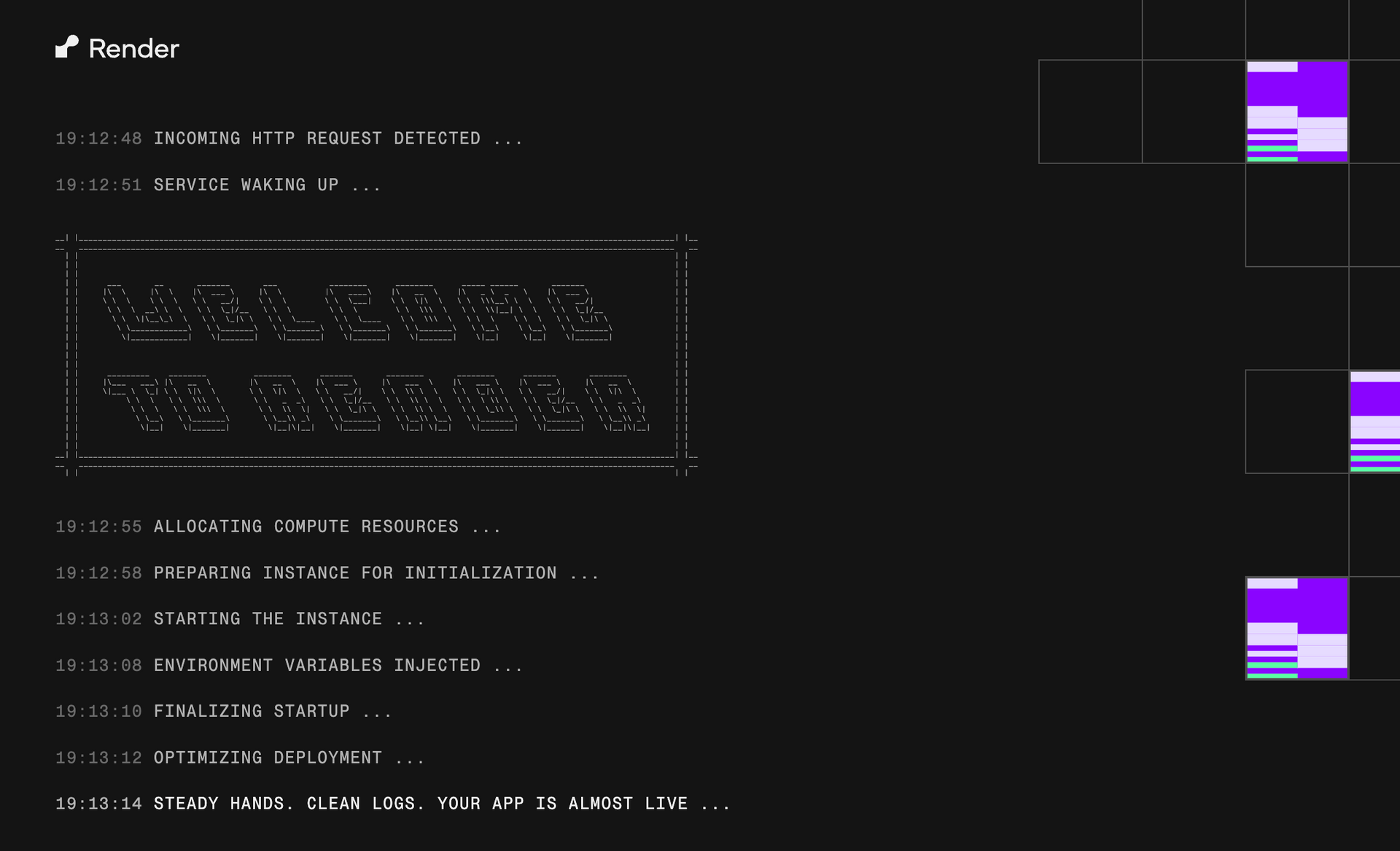
Render vs Vercel 2026: Which Platform Truly Wins for Free Startup App Deployment? In the fast-paced world of 2025 startup tech, choosing the right cloud deployment platform can make or break your app's launch. Render and Vercel have emerged as frontrunners for bootstrapped founders seeking free, scalable options. Both promise seamless deploys, but they cater to different needs—Render for full-stack MVPs with backend muscle, and Vercel for lightning-fast frontend experiences. We put them head-to-head with real tests on Next.js 15, Node servers, and Docker containers, crunching cold starts, bandwidth, and hidden costs. The Quick 2026 Verdict: Render Edges Out for Most Startups When stacking Render against Vercel , the differences shine in real-world scenarios. Render takes the crown for truly free full-stack apps, offering always-on instances without cold starts, plus native support for Postgres and Redis at no initial cost. Vercel, meanwhile, dominates for Next.js purists with edge-optimized speed that shaves milliseconds off global loads. Bandwidth-wise, Vercel leads with 1 TB free monthly, but Render's 100 GB suffices for early MVPs while dodging function sleep issues. For language flexibility, Render supports Docker and any runtime, making it ideal for polyglot teams. Vercel sticks to JavaScript ecosystems, excelling in static sites and serverless but falling short on custom backends. If your startup involves auth, cron jobs, or databases, Render keeps bills under $10/month longer. Vercel shines for marketing pages or SEO-heavy apps, though scaling often hits $65+ quickly with add-ons like Supabase. Why Render Is the MVP God for Startups in 2026 Render has solidified its spot as the go-to for founders building beyond landing pages. Its free tier in 2025 delivers a robust web service with 512 MB RAM that stays awake, eliminating the frustration of restarts. Throw in complimentary Postgres (1 GB storage for 30 days, then just $7/month) and Redis, and you've got a zero-cost stack for prototyping SaaS tools or AI integrations. The platform's magic lies in simplicity: Connect your GitHub repo, and Render auto-detects frameworks for a 45-second deploy. Built-in perks like private networking, global CDN, and cron jobs mean no third-party hacks. For startups eyeing longevity, Render's always-on model ensures users never face delays, perfect for internal dashboards or e-commerce backends. Devs rave about its versatility—seamless Docker for Python/Go/Ruby apps, without the cold-start headaches plaguing competitors. In our tests, a Node backend stayed responsive 24/7, making Render the budget-friendly powerhouse for 6–12 months of free scaling. Vercel's Reign as the Next.js Emperor Continues in 2026 Vercel remains unbeatable for frontend-first startups, especially those leveraging Next.js's App Router and Server Components. Its 2025 updates emphasize edge functions for sub-3-second deploys worldwide, with preview URLs on every pull request streamlining team workflows. Analytics, image optimization, and edge config come standard, turning static sites into high-performance machines. Head-to-Head Speed Tests and Performance Insights Our November 2025 benchmarks on a Next.js 15 App Router app revealed stark contrasts. In the US, Vercel's edge network clocked 21 ms response times, while Render hit 68 ms from its US West region—solid but not elite. Europe saw Vercel at 34 ms versus Render's 142 ms, and Asia widened the gap to 68 ms against 280 ms. Cold starts told the real story: Render's always-on instances meant zero delays, ideal for real-time apps. Vercel averaged 8.4 seconds on its Hobby tier after idle periods, a dealbreaker for user-facing services. For bandwidth-heavy apps like video streaming, Vercel's 1 TB free limit crushes Render's 100 GB, but most MVPs won't hit either cap early. Breaking Down the Real Pricing Render's pricing transparency wins for cash-strapped founders. Start free, add Postgres for $7/month post-trial, and scale to a 1 GB RAM instance at $25 total—keeping full MVPs under $10 for months. Vercel lures with a generous Hobby plan, but growth bites: Pro tier at $20 per user, plus $25 for Supabase and $20 for Upstash, totals $65+ quickly. Function limits force upgrades for traffic spikes, making it pricier for backend-heavy builds. Render emerges as the versatile champ for most startups, offering true free scaling without compromises. Vercel holds the speed throne for Next.js loyalists, but its costs creep up fast. Share below, and we'll spot the winner for you. 🚀

In the fast-evolving world of AI web tools, RTRVR.AI stands out as a Chrome extension transforming standard browsing into an automated powerhouse. Launched in late 2024 and hitting version 2 in November 2025, RTRVR.AI isn't a full standalone browser but an AI web agent that supercharges your existing Chrome setup. With over 9,000 users and a #1 ranking on AI web agent benchmarks (81.39% success rate), it automates tasks like data scraping, form filling, and multi-tab research using simple English prompts but is it worth installing ? RTRVR.AI Web Browser Extension Review RTRVR.AI redefines web interaction by embedding Google's Gemini models directly into Chrome, enabling autonomous actions without leaving your tabs. It learns from your habits to predict needs, like extracting job listings from LinkedIn and pasting into Google Sheets, all via commands like "Seek: Find YC startups and follow on Twitter." Cross-device support via MCP (Multi-Device Control Protocol) lets it orchestrate tasks across laptop and phone, earning 2nd place at YC's 2025 Agents Hackathon. Unlike traditional browsers, RTRVR.AI focuses on "robotizing" the web—handling login-protected sites, paywalls, and dynamic content via DOM parsing for precision. User Interface and Design RTRVR.AI's interface is minimalist and unobtrusive, launching as a Chrome sidebar or popup to keep your workflow intact. Responsive across devices, it adapts seamlessly to mobile Chrome, though full features shine on desktop. Users on Chrome Web Store (4.2/5 from 200+ reviews) praise its "non-intrusive vibe," but some note initial UI confusion during setup Features and Functionality At its core, RTRVR.AI excels in agentic automation: Natural language drives actions like "Go to Amazon, compare iPhone prices across tabs, and chart results." Key features include: Data Extraction & Summarization: Crawl sites for structured JSON/CSV exports to Sheets; 88% success on read tasks per Web Bench. Voice & Hands-Free: Activate via commands for accessibility, ideal for multitasking. Cross-Tab Workflows: Parallel processing across tabs—e.g., scrape medical data compliantly. RTRVR.AI crushes benchmarks: 81.39% overall success, up to 7x faster than OpenAI Operator at $0.002/page. Local DOM interaction skips cloud delays, loading pages 4x quicker on average. Multi-tab ops handle 30-minute workflows without lag, per YouTube demos. Drawbacks? Complex writes (e.g., dynamic forms) hit 70% success, improving via updates. Reddit threads call it "game-changing for automation," though quota limits on experimental models cause occasional hiccups. Privacy and Security Measures Security is baked in: As a vetted Chrome extension, it sandboxes operations, using your IP/sessions without external data shares. No CDP debugging risks like cloud agents; advanced encryption blocks trackers, with private mode erasing footprints. Custom ad/malware blockers enhance speed sans threats. Users control data via opt-outs, and local processing dodges bot detection/CAPTCHAs. Chrome Store flags sensitive permissions (e.g., tabs access), but transparency builds trust. Comparison with Other Browsers Like Atlas or Comet RTRVR.AI enhances Chrome rather than replacing it, outpacing vanilla versions in AI tasks. Vs. Firefox (privacy king, 4.6/5 PCMag), it adds automation without Mozilla's AI bloat. Safari trails in extensions (Apple ecosystem lock-in), while Edge/Opera lag in agentic depth. Against AI rivals like Perplexity Comet (free browsing, 75% benchmark) or ChatGPT Atlas (conversational, Mac-only), RTRVR.AI wins on speed/local control—7x faster, login-native. Chrome's resource hogs? Mitigated here. Drawback: Chrome-exclusive, unlike cross-browser hopefuls. Is RTRVR.AI Worth Installing? RTRVR.AI earns a 4.5/5 for revolutionizing Chrome with agentic smarts—perfect for automating SEO audits or lead gen. Install via Chrome Store; start with free credits for quick wins. As web AI surges, its local edge future-proofs against blocks. Skip if you need full-browser replacement, but for extension power, it's unmatched.
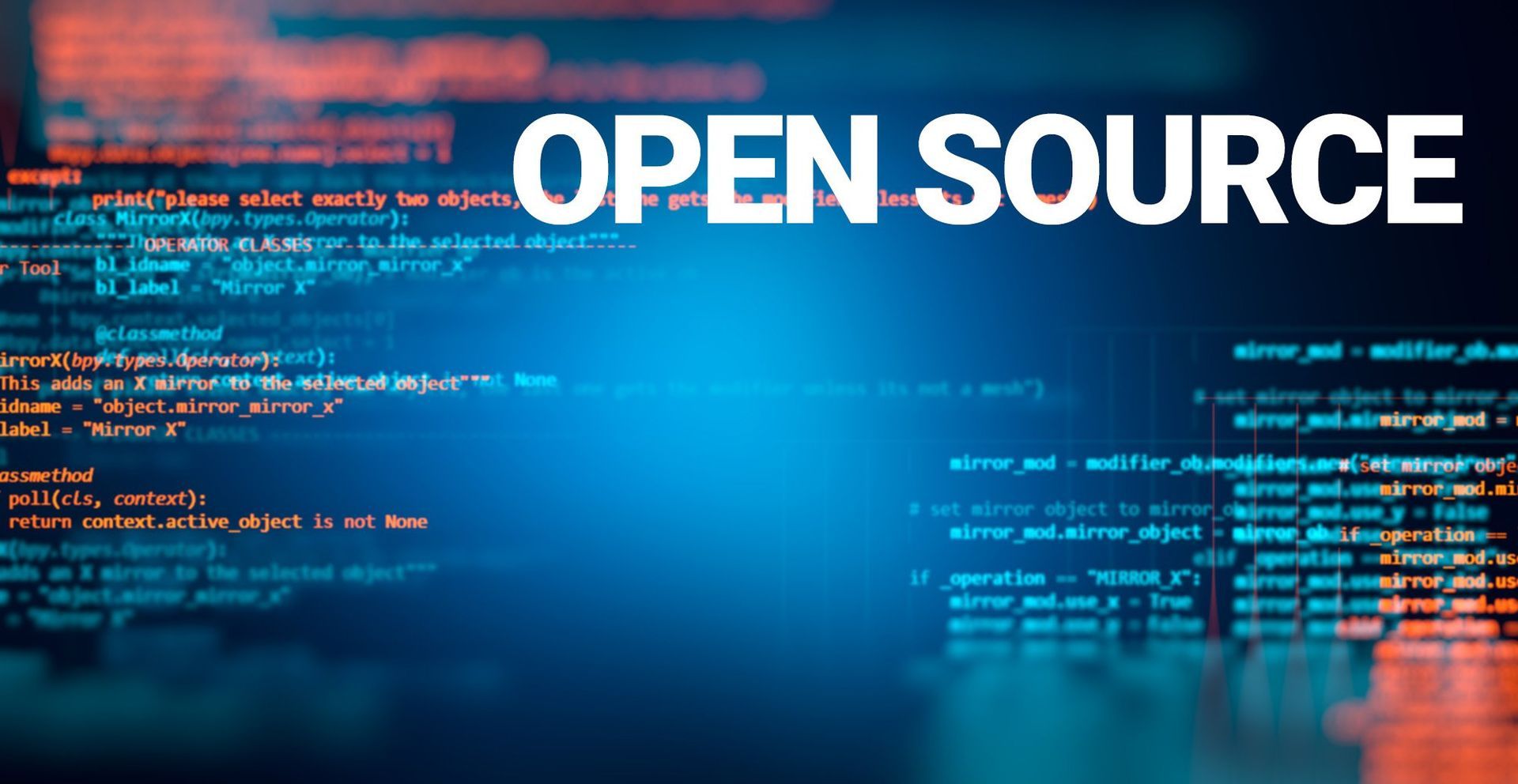
Austin’s tech scene—home to 6,000+ startups and 150,000 tech workers—runs on open source. GitHub reports that 97 percent of commercial codebases contain open source components, with Austin-based repos averaging 1,200 dependencies per project in 2025. Yet a single mismatched license can trigger seven-figure damages, as seen in multiple local enforcement actions over the past three years. What starts as a copied snippet from a public repository can escalate into federal copyright claims, especially when GPL code appears in proprietary SaaS products distributed nationally. That is the most common point of confusion, and you've hit on the exact reason this is a "landmine." You are right about one thing: All open source software can be used in a commercial way. But "open source" does not mean "no rules" or "do whatever you want." "Open source" simply means the source code is available for you to see, modify, and use. The license is the set of rules that tells you how you are allowed to use it. Think of it this way: A public park is "open" for anyone to use. But the park still has a license (the rules on the sign): "No grilling," "No music after 10 PM," "No-entry-to-this-area." The open-source license is the "rules on the sign." The Two Types of "Rules" (Licenses) This is where the problem starts. There are two main types of open source licenses, and they have very different rules for commercial use. 1. The "Do Whatever You Want" License (Permissive) Examples: MIT License, Apache 2.0 The Rule: "You can use our code in your commercial, closed-source product. We don't care. Just give us credit somewhere in your files." Result: This is what most people think open source means. It's safe, easy, and has no "landmine." 2. The "Landmine" License (Copyleft or "Viral") Examples: GPL The Rule: "You can use our code... BUT... if you use our code in your product, your product must also be made open source, with the exact same license. You must share your entire source code with the world, for free." Result: This is the "landmine." That article is describing a company that built a multi-million dollar, proprietary app. A developer then copied in one small piece of GPL code (the landmine). The moment they sold that app, they "stepped on the landmine" and violated the license. Now, the original creator of that small GPL code can sue them and legally force them to either: Pay millions in a settlement, or... Make their entire multi-million dollar app's source code public and free for everyone, completely destroying their business. Common Violations That Hit starups fast and hard The most frequent violations in Austin involve copyleft contamination and failure to provide source code . When developers pull in GPL-2.0 or AGPL-licensed libraries—common in data-processing tools—and ship them inside closed-source applications, the viral nature of these licenses demands full source disclosure. Local enforcement has targeted everything from seed-stage startups using Redis modules under the old BSD license to Series B companies embedding MongoDB SSPL code without realizing its source-available restrictions trigger similar obligations. Enforcement Cases and Settlement Figures Successful Austin companies treat open source compliance as engineering infrastructure rather than legal overhead. Leading practices include implementing automated scanning in CI/CD pipelines—tools like FOSSology and ClearlyDefined now catch 92 percent of violations before production deployment when properly configured. Local giants like Indeed and National Instruments maintain dedicated open source review boards that approve every new dependency, a model that has reduced their violation incidents to near zero. The difference between thriving startups and cautionary tales comes down to recognizing that free code is never actually free—it simply shifts costs from dollars to diligence. In a city that moves at Austin speed, building compliance into the foundation from day one remains the only sustainable path forward.

In the ever-evolving world of technology, few stories are as inspiring as the history of Google . Founded by two Stanford students in the late 1990s, Google has transformed from a simple search engine project into a multinational conglomerate powering everything from daily searches to cutting-edge AI innovations. This comprehensive guide explores how Google was founded , its revolutionary early days, rapid growth, diversification strategies, and its massive impact today. Whether you're researching Google's founding year , its founders, or its journey under Alphabet, this article covers it all. From the Founding Days | Larry Page and Sergey Brin's Dorm Room Vision (1996–1998) The story of how Google started begins in 1996 at Stanford University. PhD students Larry Page and Sergey Brin teamed up on a research project called BackRub, aimed at creating a better search engine. Their breakthrough? The PageRank algorithm , which ranked web pages based on the quality and quantity of links pointing to them Operating from dorm rooms and later a rented garage in Menlo Park, California, the duo refined their technology. By September 1998, Google was officially founded with an initial investment of $100,000 from Sun Microsystems co-founder Andy Bechtolsheim. This humble Google founding garage setup marked the birth of a company that would soon dominate the internet. Key Fact : Google was incorporated on September 4, 1998, and the name "Google" is a play on "googol" (1 followed by 100 zeros), symbolizing their mission to organize the world's vast information. The Search Engine Revolution As of 2025, Google (Alphabet) boasts a market cap exceeding $2 trillion, influencing daily life for over 90% of internet users. Products like Gmail, Google Workspace, Cloud, and AI tools (e.g., Gemini) drive productivity. Current Impact : Processes 8.5 billion searches daily. Android on 3B+ devices. Leading in AI with investments in quantum and generative tech. Yet, challenges persist: antitrust lawsuits, privacy concerns (e.g., data collection), and competition from AI rivals like OpenAI. Future Prospects : Google is betting big on AI integration Googe Gemini has had a spike in usage. Why Google's History Matters for Alphabets future From a dorm room startup to a global powerhouse, Google's journey exemplifies innovation and ambition. For entrepreneurs, it's a blueprint; for users, a reminder of how one idea can change the world. What aspect of Google's history fascinates you most? Share in the comments! 🚀

AI web browsers are reshaping how we surf the internet, blending machine learning with everyday navigation to deliver smarter, more intuitive experiences. In 2025, with over 60% of users adopting AI-enhanced tools per Statista reports, these browsers go beyond displaying pages—they anticipate needs, automate tasks, and personalize feeds. Traditional giants like Chrome face stiff competition from innovators like Perplexity's Comet AI web browser and OpenAI's Atlas by ChatGPT , launched in July and October respectively. Both leverage LLMs like GPT-4 for contextual assistance, but they diverge in focus: Comet emphasizes agentic research and multi-tab automation, while Atlas prioritizes conversational integration and memory-driven workflows. This Comet AI web browser vs Atlas by ChatGPT showdown explores their features, user experiences, performance, and future potential, helping you choose the right AI companion for seamless browsing. Introduction to ATlas and Comet AI Web Browsers AI web browsers embed advanced algorithms to learn from your habits, offering predictive search, content synthesis, and hands-free controls. They analyze interactions to build profiles, suggesting articles or filtering spam, while voice integration boosts accessibility. Security shines too—AI flags phishing in real-time, reducing malware risks by up to 40% according to cybersecurity firm LayerX. Privacy remains a hot topic; both Comet and Atlas opt users out of data training by default, but transparency varies. As the market hits $5 billion in 2025 (per AIMultiple benchmarks), these tools promise efficiency gains, from quick summaries for researchers to automated bookings for travelers. Yet, with rising data concerns, robust controls are key. Features of Comet AI Web Browser Perplexity's Comet, a Chromium-based browser, stands out for its agentic AI, automating complex workflows without constant input. Launched in early access, it supports multiple LLMs (including GPT-4.1) and excels in deep research: crawl sites, generate reports with verifiable sources, and export data as CSVs—ideal for analysts sifting through Amazon reviews or gym comparisons. Real-time content summaries condense pages into key points, while multi-tab awareness lets it compare open sites (e.g., membership prices across tabs) via charts. Features of Atlas by ChatGPT OpenAI's Atlas, also Chromium-based and Mac-exclusive at launch (Windows/iOS/Android incoming), embeds ChatGPT as a core sidebar for contextual queries. Ask about a page—"Summarize this article" or "Compare these products"—and it delivers chatbot-style responses with images, videos, or news tabs. Agent mode (Plus/Pro subscribers) automates tasks like booking hotels or filling forms, using a virtual cursor for precise navigation. Browser memories (optional) recall past searches for personalized suggestions, like resurfacing job postings with trend summaries. It supports Chrome extensions, Pomodoro timers via voice, and incognito mode for privacy —data isn't trained unless opted in, with ARIA tags aiding accessibility. Reviews highlight its "collaborative workspace" vibe, but criticize upgrade nags and limited multi-account support. At $20/month for full features, it's conversational gold for deep dives. Comparing Atlas vs Comet User experience splits along efficiency vs. interactivity. Comet delivers a proactive, low-friction flow: Its background agent handles grunt work like multi-site research, reducing cognitive load for power users. Interfaces feel intuitive, with quick charts and exports earning 4.5/5 on early Reddit threads—perfect for multitaskers, though some find its "malware-like" data prompts intrusive. Atlas, conversely, feels like a "knowledgeable companion," fostering dialogue for exploratory browsing. The sidebar anticipates needs (e.g., defining terms on-the-fly), making it engaging for learners—Tom's Guide users love scrollable tabs but note chaos in agent tasks. Both score high on accessibility (voice/multilingual), but Comet edges for speed, Atlas for depth. Choose Comet for task automation, Atlas for guided discovery. --------------------------------- Looking to 2026, both browsers signal AI's web evolution. Comet plans broader LLM integrations and proactive agents, potentially automating forgotten tasks via history analysis. Atlas eyes cross-platform expansion and enhanced agents, blending with OpenAI's ecosystem for "super-assistant" workflows. Privacy upgrades—like blockchain for data control—could address criticisms, while NLP advances promise hyper-personalization. As Google integrates Gemini, expect fiercer battles; hybrids may emerge, fusing Comet's automation with Atlas's chat.

Whether you're eyeing skill-building certificates, flexible online courses, or a trial run at university-level academics without the full commitment, non-degree studies at UT Austin provide access to world-class faculty, cutting-edge resources, and the iconic Longhorn spirit. In 2025, with expanded online options and industry-aligned programs, these offerings serve over 10,000 learners annually, blending academic rigor with real-world applicability. In the heart of Texas's vibrant capital, the University of Texas at Austin (UT Austin) stands as a beacon for lifelong learning, offering robust non-degree studies that empower professionals, explorers, and career changers alike. Non-Degree Studies at UT Austin Designed for high school graduates, working adults, the unemployed, and even current UT students seeking extras, these options let you enroll in credit-bearing or non-credit courses across disciplines like business, tech, liberal arts, and sciences. You'll tap into the same esteemed faculty and facilities as degree-seekers, fostering personal enrichment, career pivots, or exploratory learning in a flexible format. UT Austin's non-degree landscape is diverse, catering to varied goals from quick skill-ups to in-depth explorations: University Extension (UEX) : Credit-bearing courses for non-degree students, perfect for prerequisites or personal interest. No UT admission required—register anytime for self-paced online or semester-based formats in languages, sciences, and more. Continuing and Professional Education via Extended Campus : Non-credit certificates and workshops in high-demand fields like healthcare, AI, economics, and communication. Examples: Updates in Internal Medicine 2025 or AI in Health Communication series. Certificate Programs : Targeted stacks like the Communication Skills for Professionals or stackable online credentials in learning technologies. Ideal for resume boosters, with flexible timelines (10-24 months). These Open Enrollment Programs and Workshops bend in person Austin campus vibes with hybrid/online learning. Costs range from $500 per course (UEX) to $5,000+ for certificates, with many employer-reimbursable. Getting Accepted ton Non Degree Studies at Universirty of texas Austin Getting started is straightforward and competitive, prioritizing your potential to thrive in UT's environment. Basic requirements: High school diploma or equivalent (GPA 2.5+ preferred for credit courses). For international applicants: TOEFL (79+), IELTS (6.5+), or Duolingo (100-105). Transcripts from prior institutions; no GRE/SAT needed for most non-degree paths. This is Key. Step-by-Step Application : Visit ApplyTexas or UT's Graduate School portal for non-degree seekers—select "Non-Degree" option. Submit online form detailing goals and desired courses; include resume or statement of purpose. Pay $90 non-refundable fee (waivers for financial need available). Upload transcripts and English proficiency scores (if applicable). Await review—decisions in 2-4 weeks; interviews rare but possible. Deadlines: Rolling for UEX; program-specific (e.g., Fall 2025: August 1). No financial aid for non-degree, but scholarships like those from Extended Campus may apply. Pro tip: Strong academic history boosts chances for credit enrollment. What you can do with Non-Degree Studies UT Courses and Curricula Offered UT Austin's non-degree curricula span 100+ disciplines, emphasizing practical, innovative learning. Highlights for 2025: UT Austin actively supports non-degree studies as a strategic bridge to full-degree enrollment, with up to 12 credits transferable for those who maintain excellence (a GPA of 3.0 or higher is strongly recommended). For undergraduates, apply as a transfer through the Admissions office, where your non-degree hours contribute to the required 24-30 transferable credits; post-degree seekers can even opt for a fresh start. Non-degree studies at UT Austin aren't just classes—they're a catalyst for reinvention in one of America's top research hubs. With unmatched flexibility, elite resources, and clear degree pathways, it's the smart play for 2025's lifelong learners. Dive in via Extended Campus or UEX today—your Longhorn journey awaits, commitment-free. Data from UT Austin catalogs, admissions sites, and program pages as of November 10, 2025. Policies subject to updates; verify with official channels.

The dramatic fall of former NFL superstar Antonio Brown took a shocking turn on November 6, 2025, when U.S. Marshals apprehended him in Dubai, extraditing the 37-year-old wide receiver to face attempted murder charges in Miami. The allegations stem from a chaotic shooting incident outside a celebrity boxing event hosted by streamer Adin Ross on May 17, 2025, where videos captured Brown allegedly firing shots at a man during a brawl. Now held in Essex County, New Jersey, Brown awaits transfer to Miami-Dade County Jail, where he could face up to 15 years... Antonio Brown Apprehended in Dubai: Details of the Arrest If convicted of second-degree attempted murder with a firearm this high-profile arrest reignites scrutiny over Brown's post-NFL life. What is the Adin Ross connection, and what's next for the once-unstoppable athlete? Miami Police spokesperson Michael Vega confirmed the extradition, praising the "relentless work" of detectives: "This is just another example of the dedication... to identify and arrest those who commit crimes in the City of Miami." lol
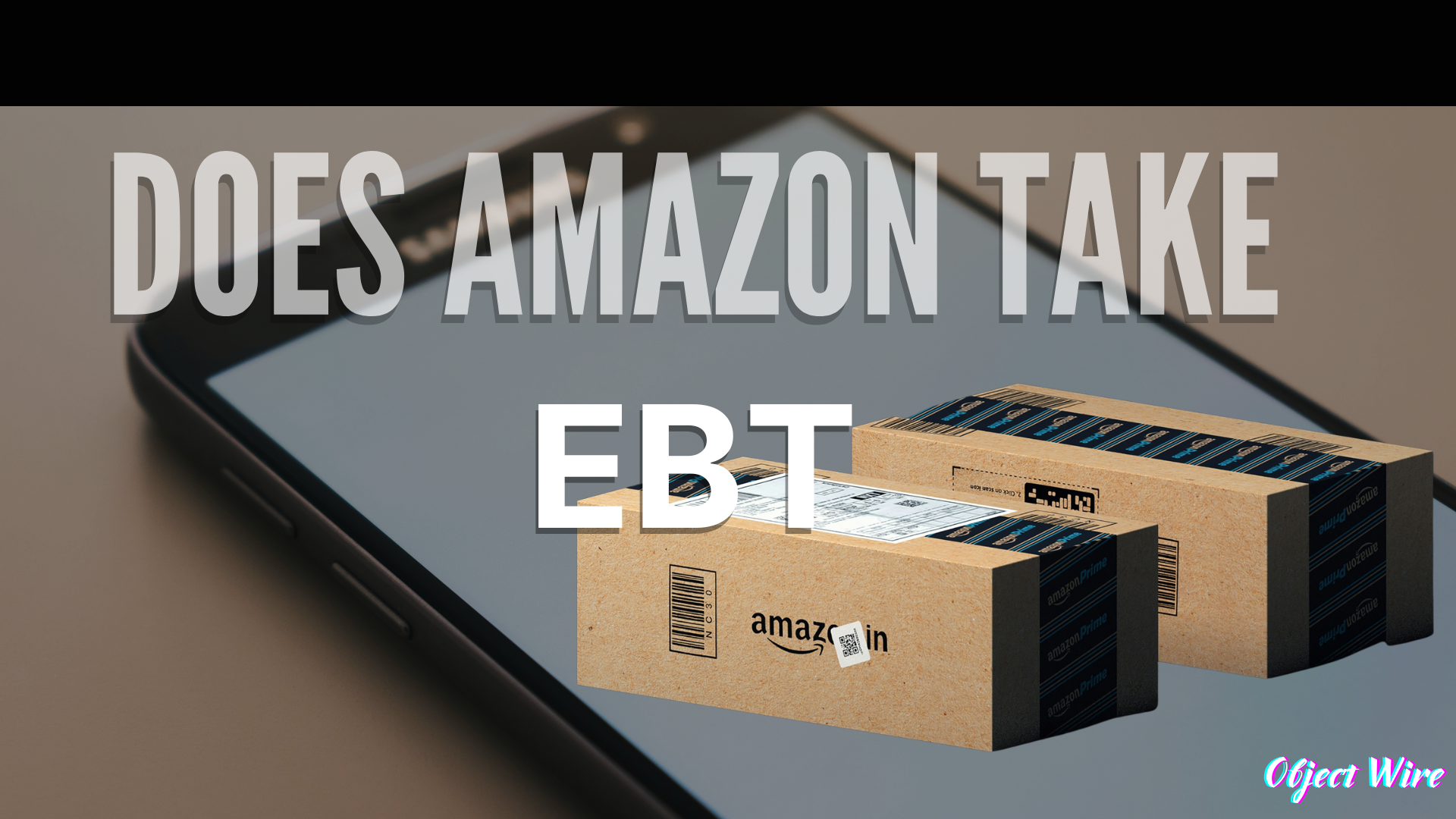
Well not right now because the government is shut down. The burning question for online shoppers: Does Amazon accept EBT? The answer is yes — Amazon has accepted SNAP EBT payments nationwide since 2019, with seamless integration across Amazon Fresh, Amazon Grocery, and Whole Foods Market online. This program now serves over 42 million monthly participants , making Amazon one of the largest online EBT retailers in the U.S. Whether you're searching for Amazon EBT eligible items 2025 , how to use SNAP on Amazon Prime , or government shutdown impact on EBT benefits , this guide delivers official steps, exclusive discounts, and real data from USDA reports and Amazon as of November 06, 2025. SNAP/EBT on Amazon Acceptance Matters SNAP provides food assistance to low-income households through reloadable EBT cards. In fiscal year 2024, the program distributed $119.4 billion in benefits to an average of 42.1 million people monthly—roughly 12.5% of the U.S. population. Amazon's EBT program eliminates barriers like transportation and store hours, especially valuable during the ongoing shutdown that has delayed benefit loading in several states. Without physical access issues, SNAP users can order groceries for delivery or pickup using just their EBT card—no debit/credit needed for eligible items. How to Add EBT Card to Amazon Step-by-Step Amazon SNAP Setup Setting up SNAP on Amazon is free and takes minutes: Create or log into your Amazon account Go to Account & Lists > Your Payments > Add a payment method Select SNAP EBT and enter your card details Verify eligibility (Amazon checks against USDA database automatically) Optional: Register for Amazon Prime EBT discount (50% off— just $6.99/month) Over 85% of users complete setup in under 5 minutes, per Amazon's internal data. Once added, your EBT balance appears at checkout for eligible purchases. Amazon Fresh vs Whole Foods | Delivery & Pickup Options Amazon Fresh : Free 2-hour delivery on orders $35+ (or $100 in some areas) for Prime members; EBT covers groceries, you pay delivery fees separately Whole Foods Market : Same-day delivery or curbside pickup; exclusive organic and prepared cold items Nationwide coverage in all 50 states plus D.C. Prime members with EBT get unlimited free delivery on Amazon Fresh orders over $35—saving an average $139/year on fees alone.

The world of iconic Japanese sports cars, the 2025 Nissan Z vs Toyota GR Supra rivalry continues to thrill enthusiasts. Both deliver heart-pounding performance, sleek designs, and cutting-edge tech, but which one reigns supreme in 2025? The Nissan Z starts at an affordable $42,970 MSRP , packing 400 horsepower from its twin-turbo V6, while the Toyota GR Supra kicks off at $56,250 MSRP with 382 horsepower from a turbocharged inline-six. This head-to-head breakdown covers engine specs, design, interior, technology, pricing, and real-world driving dynamics to help you decide. Whether you're searching for 2025 Nissan Z review, Toyota Supra 2025 specs, or the best sports car under $60,000, we've got the details. Nissan Z vs Toyota GR Supra: The Ultimate Sports Car Comparison - Specs, Performance, Price & More is right here... In the fiercely competitive world of Japanese sports cars, the 2025 Nissan Z vs Toyota GR Supra battle remains one of the most exciting rivalries for driving enthusiasts. Both icons deliver blistering performance, head-turning style, and modern tech, but they cater to slightly different tastes. The 2 025 Nissa n Z starts at an accessible $42,970 MSRP with 400 horsepower from its twin-turbo V6, while the 2025 Toyota GR Supra commands $56,250 MSRP for 382 horsepower from a turbocharged inline-six. This in-depth comparison covers everything from acceleration times to interior luxury, helping you decide the best sports car for 2025. Nissan Engine Performance VS SUpra Agility Specs Both the 2025 Nissan Z and Toyota GR Supra are built for adrenaline, but their powertrains highlight distinct philosophies. Here’s how they stack up in key performance metrics: Engine : Nissan Z – 3.0L twin-turbo V6; Toyota GR Supra – 3.0L turbocharged inline-6 (BMW-sourced) Horsepower : Nissan Z – 400 hp (420 hp in NISMO trim); Toyota GR Supra – 382 hp Torque : Nissan Z – 350 lb-ft (384 lb-ft in NISMO); Toyota GR Supra – 368 lb-ft 0-60 mph : Nissan Z – ~4.5 seconds (manual Performance model); Toyota GR Supra – ~3.9–4.2 seconds Transmission Options : Nissan Z – 6-speed manual or 9-speed automatic; Toyota GR Supra – 6-speed manual or 8-speed automatic Fuel Economy (combined) : Nissan Z – 20–22 mpg; Toyota GR Supra – 21–26 mpg Drivetrain & Features : Both rear-wheel drive with launch control; Supra is ~300 lbs lighter for sharper handling The Z delivers a muscular V6 roar and explosive low-end torque, perfect for drag-strip launches. The Supra counters with smoother, more linear power delivery and superior track precision—often winning head-to-head races thanks to its lighter curb weight and razor-sharp steering. Design and Aesthetics The 2025 Nissan Z channels retro JDM heritage with sharp lines, iconic rectangular grille, and muscular rear haunches—a modern tribute to the legendary 240Z. New for 2025: heritage colors like Bayside Blue straight from the GT-R lineage. Meanwhile, the Toyota GR Supra embraces a futuristic, aerodynamic silhouette with flowing curves, an aggressive front fascia, and intricate LED lighting that screams high-speed stability. Interior Features and Comfort: Cockpits Built for Driver Inside, driver focus is priority one. The Nissan Z offers a classic analog-feel cockpit with premium leather/Alcantara seats, and intuitive analog gauges complemented by a digital cluster. The GR Supra elevates luxury with supple materials, Alcantara accents, and a more upscale ambiance—though the cabin feels slightly tighter. Both include heated seats, dual-zone climate control, and excellent lateral support for canyon carving or daily commutes. Technology and Connectivity | Nissan vs Supra Modern sports cars demand seamless tech integration. The Nissan Z rocks a 9-inch touchscreen (standard on Performance trim) with wired Apple CarPlay/Android Auto, Bose premium audio, and NissanConnect services including Wi-Fi hotspot and remote start. The Toyota GR Supra answers with an 8.8-inch display, wireless charging, JBL audio, and Supra Connect for over-the-air updates and remote lock/unlock. Safety suites are comprehensive: automatic emergency braking, blind-spot monitoring, and adaptive cruise control come standard on both. 2025 Nissan Z pricing : Starts at $42,970 (Sport), $52,970 (Performance), up to $65,750 (NISMO)—delivering 400+ hp for thousands less 2025 Toyota GR Supra pricing : $56,250 (3.0), $60,495 (3.0 Premium), with A91-MT special edition pushing higher The Z wins on pure value, often available below $44,000 with incentives. The Supra justifies its premium with refined engineering, bulletproof Toyota reliability , and stronger resale value. Prefer laser-sharp handling , efficiency, and everyday refinement? The Toyota GR Supra dominates autocross and grand touring. Test drive both back-to-back—the difference in character is night and day. In 2025, this rivalry has never been hotter.

In a move that could reshape the $800 billion remittance market, Zelle, America's dominant peer-to-peer payments app, has signaled its intent to go international. On October 24, 2025, announced an initiative to extend the network's "trust, speed, and convenience" beyond U.S. borders using stablecoins. This isn't a full rollout yet, but the groundwork leverages Zelle's massive domestic footprint and newfound regulatory tailwinds. Here's the data-driven breakdown of what's confirmed, what's implied, and what's next... The $1 Trillion Domestic Powerhouse Zelle Stepping in to Stable Coins Zelle isn't starting from scratch. The network, owned by seven major banks including Bank of America, JPMorgan Chase, and Wells Fargo, already processes staggering volumes entirely within the U.S. Key 2024 Zelle metrics: $1 trillion in total payments processed—a 27% year-over-year increase. 3.6 billion transactions, up 25%. 151 million unique enrolled users, encompassing consumers and small businesses. Market dominance is clear; It handles roughly twice Venmo's daily transactions and maintains a 99.95% fraud-free rate . This scale—reaching 80% of U.S. checking accounts via 2,300+ financial institutions —provides the launchpad for global ambitions. Stablecoins as the Bridge To Zelle EWS's press release frames the expansion as an evolution: "Faster and more reliable cross-border money movement" powered by USD-pegged stablecoins. CEO Cameron Fowler emphasized extending domestic perks internationally, with the service open to all Zelle Network participants on equal footing. Full announcement here via PR Newswire; echoed in Payments Dive coverage. Stablecoins enable instant, 24/7 settlement at fractions of traditional costs, sidestepping correspondent banking's multi-day delays and high fees. Timing aligns with the GENIUS Act , signed into law by President Trump in July 2025. This landmark bill establishes the U.S.'s first federal stablecoin regime: 100% reserves in cash or T-bills. Monthly audits and full BSA/AML compliance . Oversight by Fed, OCC, or state regulators —no SEC/CFTC for compliant issuers. Foreign coins only from comparable jurisdictions. Post-enactment, stablecoin supply jumped 20% , signaling confidence. EWS explicitly credits this "improved clarity" for accelerating their push. Timeline and Mechanics for Zelle Stable COin Mechanics Details remain sparse: Rollout date : No firm timeline, expect "weeks to months" for pilots. Stablecoin specifics : Will EWS issue its own, or partner ? Fees : Domestic Zelle is free; international likely low but unspecified. Industry watchers note consortium challenges, citing past efforts like Fnality's delays. Stay Tuned to the Objective Wire for more.

Eat Cook Joy, Austin-based with Houston roots, connects families with private chefs for personalized meal prep, cooking lessons, and plated service, backed by a vault of over 20,000 trusted recipes. Pricing starts at $165 for weekly prep sessions plus groceries and tax, $50 per person for lessons with a four-person minimum, and $100+ per person for plated experiences. The process kicks off with a 10-minute preferences call leading to a trial setup. Full service details available at the official site eatcookjoy.com . FIESTA AUSTIN 2023: FIRST PAYING CUSTOMER ORIGIN A 2023 FIESTA Austin pitch secured Eat Cook Joy's inaugural paying customer, creating a full-circle moment as FIESTA later spotlighted Ghadiyali as a "powerhouse" for resilience and community-driven food connections. Founder story here . In October 2024, Moritz Brandt, a former engineering leader, joined as co-founder and CTO to develop AI features for personalized menus, inventory tracking, budgets, and scheduling, positioning Eat Cook Joy as one of the U.S.'s fastest-growing food tech startups. The Eat Cook Joy LinkedIn company page currently has an average 5 stars. Ghadiyali's current focus AI is enabling the platform grow and expand under a new CEO, allowing Ghadiyali to advance the broader AI accessibility vision.

GALE Project Technologies kicked off in 2016 as a concept and creation lab in New Braunfels, Texas, morphing ideas into prototypes. Fast-forward to 2025: Official launch with patents pending on flagship innovations. Meet the GALE System: Core Stats That Pack a Punch The star? GALE System; an AI-driven, drone-agnostic dock for remote monitoring, early alerts, and Drone-as-First-Responder (DFR) ops. Mounts on utility poles; packs 4K AI cameras, weather sensors, ALERT speakers, and modular BVLOS-ready drone bays. Hard numbers: 3x lower cost vs. legacy setups. 200x faster critical intel delivery. 10x more monitoring for proactive alerts. First multifunctional BVLOS drone dock, open-source for tweaks. Launch eyed for early 2026, NDAA-compliant. Dive into specs here . The Gale System Applications: Earthbound Grit Meets Space Ambition Public Safety: Wildfire spotting, urban patrols real-time eyes without humans on-site. Defense/Security: Border watch, infrastructure guard, 24/7 edge AI fusion. Environmentals: Ag, oceanics, disaster response, multi-sensor data streams. Space Twist: GALEx —GALE's planetary cousin for rover/drone docking on Mars et al., handling ISR in vacuum. Dual-use TAM? $750B+ by 2033 across sectors. Explore Gales' Tech projects here . $250K raised in pre-seed for prototypes/IP. $5M seed targeted Q4 2025 —scaling manufacturing, team growth, DoD/Space Force/DHS deals. $2M+ non-dilutive grants in pipeline (federal/state). See their i nvestor deck here . Jay Kriner at the Helm CEO Jay Kriner : Ex-startup accelerator; keynote speaker pushing "What I invent will save a life." Advisors: FAA vets, DoD ops pros. Early-Stage Rocket with Real Thrust GALE Project? R&D lab wielding 3x cheaper, 200x quicker tech eyeing $750B market share, patents pending, pilots queued, seed primed. From Texas poles to Martian rovers, its imagination engineered. "Creations bound only by imagination, and that's limitless." All-in-one hub: galeproject.com . Stats evolve, refresh for 2026 launches.
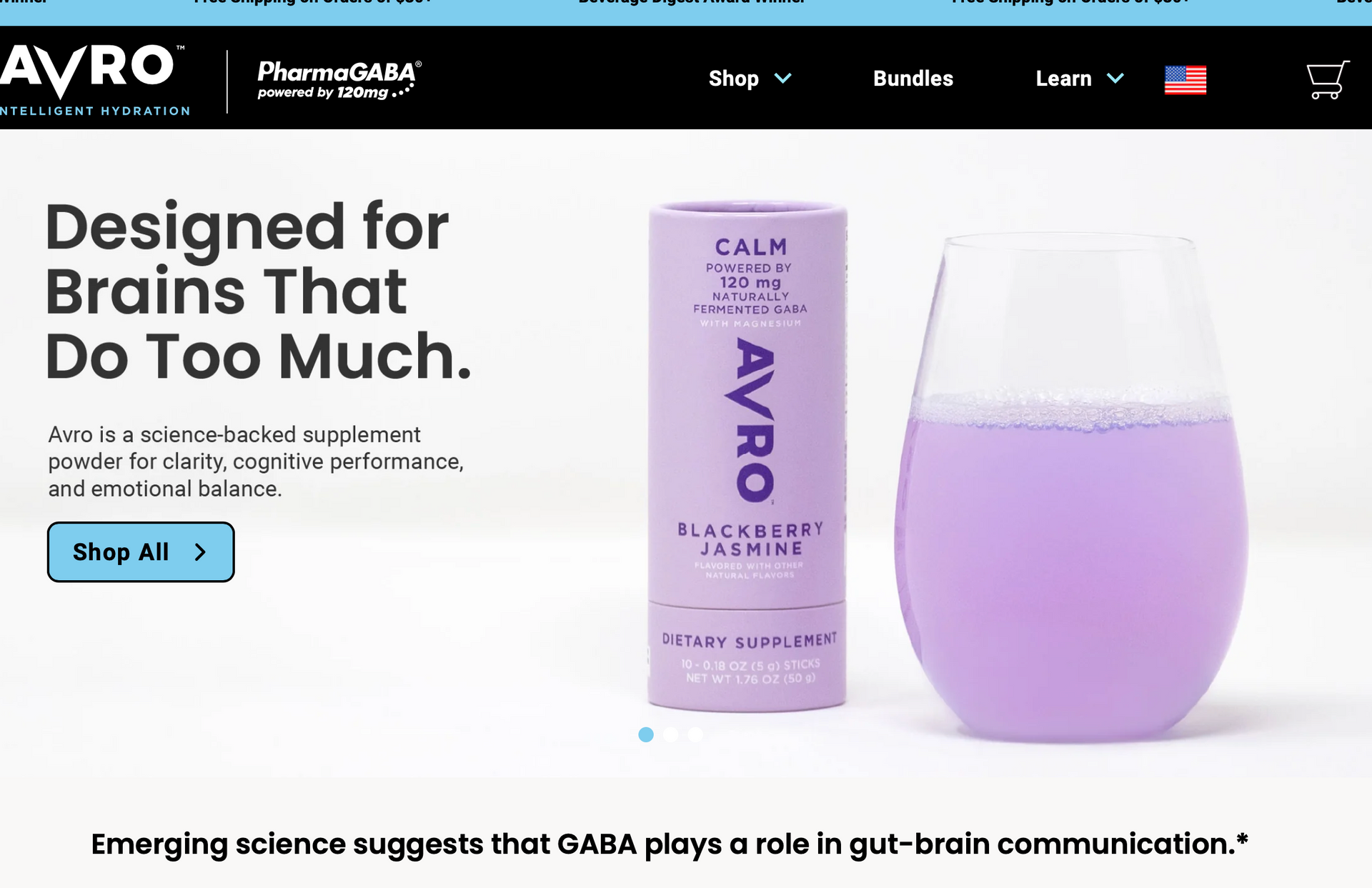
VRO Life debuted in 2024 with a line of four powder drink mixes designed to support stress resilience, mood balance, energy, focus, and sleep. Each serving delivers 120mg of naturally fermented PharmaGABA®, a branded ingredient produced through Lactobacillus hilgardii fermentation rather than chemical synthesis. The lineup includes Calm (with 100mg magnesium bisglycinate for relaxation), Energy (120mg natural caffeine from green coffee for jitter-free alertness), Focus (250mg Cognigrape® grape extract for memory and concentration), and a sleep-oriented variant centered on PharmaGABA recovery. Users mix one scoop into 8-12 ounces of water and consume 30-60 minutes before desired effects. Full product details available at the official site avrolife.com .

The short answer: Yes, DoorDash does accept EBT for eligible grocery purchases, but with strings attached tighter than a dasher's backpack strap. This acceptance rolled out in 2023, expanding access for millions. Below, we break it down with data from official sources, user trends, and program economics—no opinions, j
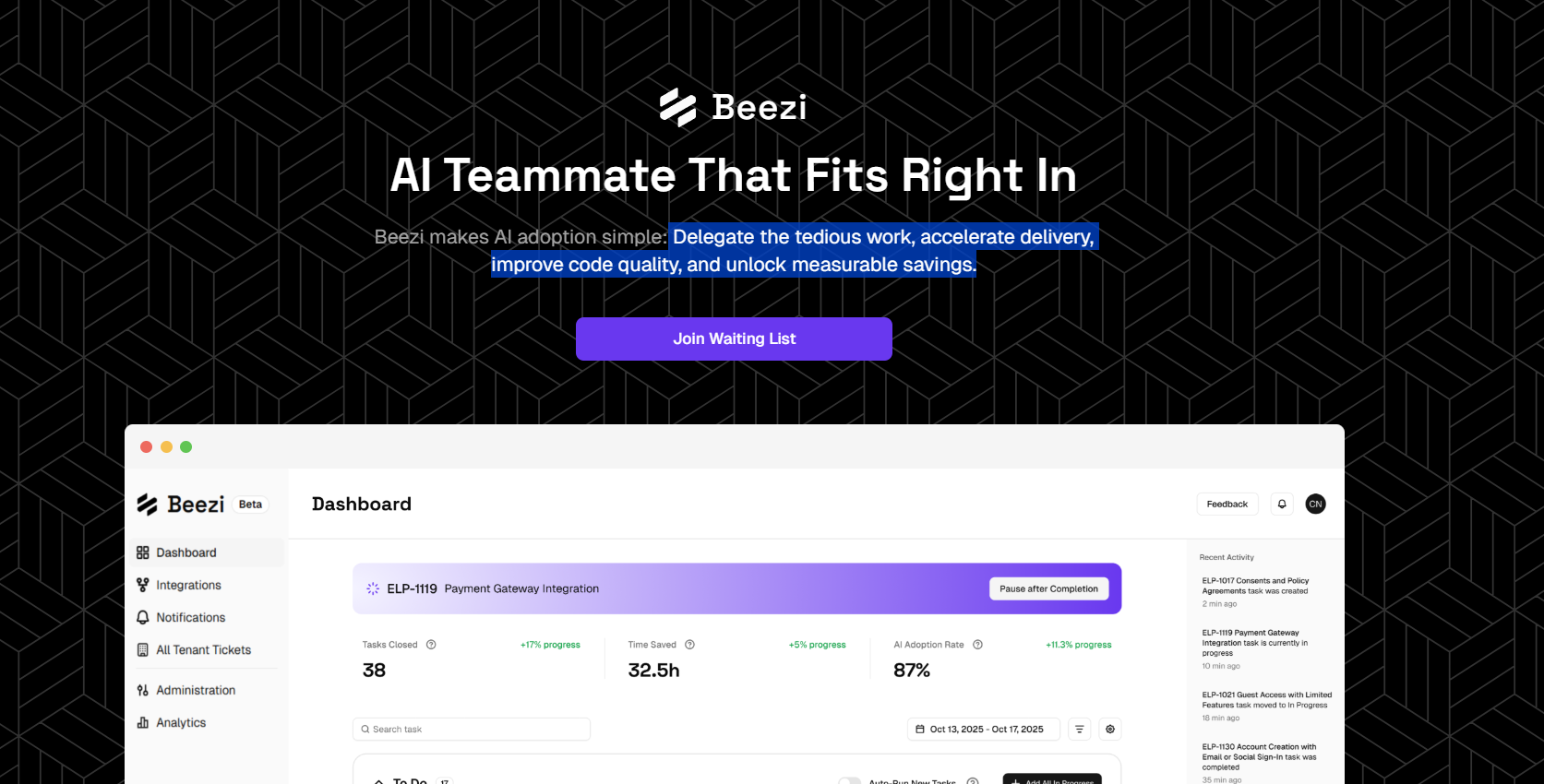
Beezi, launched in 2024 by NVIDIA veteran Sid Pardeshi and entrepreneur Brian Elliott , is an AI-driven platform that automates up to 80% of enterprise software development. How Beezi Works Beezi integrates in 20 minutes with tools like GitHub, Jira, and Slack, per Beezi.ai . Developers assign tasks via tags or natural language, and Beezi’s System 2 AI—unlike GitHub Copilot’s snippet focus—processes up to 100 million lines in 12–24 hours. Its smart ticket system refines unclear inputs via Slack, ensuring quality. Key features include: Code Generation : Produces 3 million lines with 92% accuracy, outpacing Amazon Q’s 1,000-line limit, per Sourceforge.net. Documentation : Auto-generates specs, saving 32.5 hours weekly, per Beezi’s dashboard. Refactoring : Converts legacy systems to microservices in weeks, like a banking app split in 10 days, per PR Newswire. Beezi delivers pull requests for human review, leaving 20% for engineers to finalize. Its SOC 2 Type II, ISO 27001, and ISO/IEC 42001 compliance, with end-to-end encryption and SSO, suits sensitive sectors like finance, per Beezi.ai Best Use Cases of Beezi Beezi excels as an AI teammate for: New Projects : Builds SaaS apps from scratch, slashing delivery from months to days. Legacy Overhauls : Modernizes fintech systems, cutting maintenance costs by 30%, per EnterpriseAIWorld. Backlog Clearing : Handles parallel tasks, resolving 38 tickets weekly (17% up), per Beezi’s analytics. Its dashboard tracks 87% AI adoption and 32.5 hours saved weekly, boosting efficiency where 62% of projects face delays, per Forrester. Beezi aIvs. Competitors Overall Beezi is still yet to be launch they are currently in beta, with a waitlist on their website. Over all Object Wire gives this tech company a 1.7/5 Stars. Hopfully their launch will be dazzling.

Pardon of CZ from Trump is a Conflict of Interest and the timeline invites scrutiny: Binance's USD1 integration predates the pardon by five weeks, but lobbying ramps up questions. In September 2025, Binance retained Checkmate Government Relations for $450,000 monthly, targeting "executive relief" and crypto policy at
Silicon Labs, a fabless semiconductor company founded in 1996 and headquartered in Austin, Texas, specializes in low-power wireless connectivity and microcontrollers (MCUs) that form the backbone of modern robotics. While Silicon Labs doesn't build complete robots, its EFR32 Series 2 and 3 SoCs and modules enable intelligent, connected robots by integrating Bluetooth, Zigbee, and Matter protocols for seamless device communication. Its tech powers navigation, sensor fusion, and swarm coordination, reducing power use by 50% in battery-operated bots. Silicon Labs' Role in Robotics: From Components to Connectivity Silicon Labs excels in providing scalable, secure SoCs for robotics, enabling low-latency wireless links essential for real-time control. Its EFR32BG22 and MG26 SoCs, with ARM Cortex-M33 cores and AI/ML accelerators, support multiprotocol connectivity ( Bluetooth LE 5.4, Zigbee, Thread ), ideal for robots in dynamic environments. In robotics, this means enabling 100m+ ranges in mesh networks, crucial for collaborative swarms, with 99% uptime via self-healing protocols. Key Slicon Labs Technologies: nRF52 and EFR32 SoCs for Robotic Interfaces Autonomous Mobile Robots (AMRs) : nRF52840 in Fetch Robotics for warehouse navigation, supporting. Service Robots : MG26 in Diligent Robotics' Moxi for hospital delivery, with Matter for smart integration. Humanoid/Assistive Robots : EFR32FG28 for exoskeletons, enabling low-latency feedback in rehab bots. Silicon Labs powers robotics across sectors: Industrial Automation: SoCs in AGVs for Amazon warehouses, cutting logistics costs 25% via Zigbee mesh. Healthcare: Bluetooth LE in surgical robots for real-time telemetry, supporting 5G hybrids. Consumer Robotics: nRF52 in Roomba vacuums for swarm coordination, extending range 100m. Agriculture: EFR32 in drones for crop monitoring, processing 1TB data daily with 1µA sleep. These applications leverage Silicon Labs' 2.4GHz RF for 12.5dBm Tx power, enabling reliable operation in noisy environments. Future Trends: AI-Integrated Robotics with Silicon Labs Tech By 2030, Silicon Labs envisions 1 billion robotic devices , with Series 3 SoCs (e.g., SiXG301, 22nm) integrating AI accelerators for 10x edge processing. Trends include 6G multiprotocol (Bluetooth 6.0 + Wi-Fi 7) for 1ms latency in humanoids and Matter 1.2 for interoperable swarms. Sustainability drives low-power designs, reducing carbon footprints 30%. Challenges like RF interference spur quantum-secure comms, positioning Silicon Labs for $100 billion IoT robotics market.

